

In Theory (episode)
- View history
- 1.2 Act One
- 1.3 Act Two
- 1.4 Act Three
- 1.5 Act Four
- 1.6 Act Five
- 2 Log entries
- 3 Memorable quotes
- 4.1 Production history
- 4.2 Story and script
- 4.3 Production
- 4.5 Continuity
- 4.6 Reception
- 4.7 Video and DVD releases
- 5.1 Starring
- 5.2 Also starring
- 5.3 Guest stars
- 5.4 Special guest star
- 5.5 Co-star
- 5.6 Uncredited co-stars
- 5.7 Stand-ins
- 5.8.1 Other references
- 5.8.2 Unused production references
- 5.9 External links
Summary [ ]
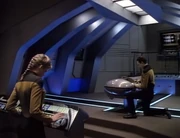
Data and Jenna work in the torpedo bay to prepare a probe
Jenna D'Sora , who had recently broken up with her boyfriend, Jeff Arton , is working with Data on a probe in the USS Enterprise -D 's torpedo bay . When Data notices that she is subdued, she mentions that she saw Jeff earlier in the turbolift , and that he had asked her to dinner. Responding to a request Jenna had made of him earlier, Data recites a litany of reasons why she had chosen to break up with him. Data tells her that " As your friend, it is my responsibility to be supportive in times of need. " – a behavior she finds sweet. Meanwhile, the Enterprise launches the now-completed probe into the nebula, producing a beautiful display.
Act One [ ]
In Ten Forward , D'Sora and Data play in a chamber concert , along with Keiko O'Brien . After the performance, D'Sora criticizes her own playing, but Data argues that there were no major technical errors in her music. She insists, and Data responds by offering to practice with her, but assuring her that the audience didn't notice any problems and enjoyed themselves. She appreciates his making the effort, and later, as D'Sora and Data have a drink with Keiko and her husband Miles O'Brien , Data successfully entertains the table by making lovers' small talk with Jenna. On the bridge , Data is analyzing the readings from their probe. The nebula has a greater density of dark matter than other similar formations. He hypothesizes that life in this region may have developed in hitherto unseen ways. It is decided that the Enterprise will travel to a planet within the region, to see if Data's theory is correct.
In sickbay , Dr. Crusher hears a hypospray fall on the floor from a table as she walks by but thinks nothing of it.
In the torpedo tube , Data is working on another probe, while Jenna talks to him about her family. She wishes she could fall for a man like Data, given that he is perfect. Data reminds her that he is not as he has no feelings of any kind. D'Sora says that he has given her so much and notes that Data is with her when she is lonely and encourages her when she is down. Before she leaves, Jenna kisses Data, first on the cheek, and then on the lips, leaving the android somewhat puzzled.
Act Two [ ]
Data immediately starts seeking advice from his colleagues on romantic love in general and on what he should do, since Jenna apparently shows serious interest in him. In Ten Forward, Data tells Guinan , " Lieutenant D'Sora just gave me what could be considered a very passionate kiss in the torpedo bay. " Guinan advises him that this will be an entirely new (and interesting) experience for him. Geordi La Forge warns him about pursuing a woman on the rebound, but then corrects himself, suspecting she might be over the rebound, and finally admits he has no advice to give and advises Data to seek someone out who is more experienced in giving advice. Deanna Troi worries that Jenna may be in a vulnerable position but stops short of discouraging him from romancing Jenna. " We're all more than the sum of our parts, Data. You'll have to be more than the sum of your programming ", she tells him. Worf informs him that Klingons do not pursue romances the same way Humans do; they conquer what they desire. He adds in a menacing whisper that, as her superior officer , he would be very displeased if Lt. D'Sora were mistreated. Will Riker encourages him to go for it, stating that the rewards of a romantic relationship are far greater than that of simple friendship. Captain Picard refuses to comment, stating that he would be happy to pass along any advice about understanding women, as soon as he has any to give.

A bouquet for Jenna
Data goes to D'Sora's quarters, with a bouquet of flowers that Jenna finds lovely. The flowers are a variety of crystilia from Telemarius IV which Riker had recommended to Data. When Jenna asks how many people he discussed her with, he replies that it was less than 1% of the ship's crew. Data tells Jenna that he has created a special program devoted to romantic relationships. When Data informs her that he has " devoted a considerable share " of his internal resources to the development of a subroutine within this program, specifically for her, she tells him that's the nicest thing anybody had ever said to her. Data and Jenna then share a kiss.
Act Three [ ]
On the bridge, the Enterprise is approaching a class M planet within the nebula. The captain goes to his ready room , only to discover that the items usually located atop his desk are lying on the floor. Picard summons Worf, asking him to bring a tricorder with him. They discover that there is no evidence that anyone other than the captain had been in contact with the items, but there is no obvious explanation for the displacement. Picard jokingly tells Worf that they may have a poltergeist on their hands, which he does not find amusing. Worf is suspicious, but Picard feels that the situation, while perplexing, is not serious.
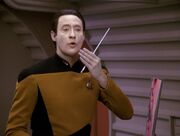
" I'll see you tonight. "
Data is confused by the strange concept of love and how he must continually show this to Jenna D'Sora. For example, D'Sora arrives unexpectedly in his quarters with a gift of a Tyrinean blade carving as a decoration for his spartan quarters as he is painting but tells him to go back to his painting . He does so, and then is perplexed when Jenna reveals that she had actually wanted him to stop his painting and give her his full undivided attention. As she leaves, a section of the wall in the corridor seems to disappear briefly. The anomalies have now moved past the point of what Picard initially laughed off as "poltergeist" phenomena, and as the ship arrives at the coordinates of the planet, it is nowhere to be found.
Act Four [ ]
After ruling out a sensor malfunction, the planet suddenly reappears in front of them. The computer informs the bridge crew that there has been a decompression in the observation lounge . The computer announces that the environmental compensation sequence has been initiated. When life support is restored to that room, the crew investigates, and discovers all the furniture in the room piled up near one of the windows. Data scans the transparent aluminum alloy in the windows, and notices an unexplained anomaly in the readings. Picard orders further investigation.
When his shift ends, Data goes to D'Sora's quarters. At first, Jenna enjoys the relationship. Ironically, it is Data's nearly perfect performance as an attentive lover that causes Jenna to lose her love for him. He welcomes her with Calaman sherrys and a soothing attitude, but this fails to set her at ease; he begins to straighten up her quarters, but she doesn't want him to do this. Confused, he bolts from his place beside her and begins shouting at her. Jenna is shocked by this, and tells Data to leave. He asks, " You do not wish to continue our ' lovers' quarrel '? ", thus revealing that he is still running through his database to find an appropriate response for her. Jenna is both touched and saddened to hear this.
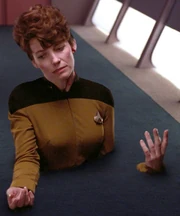
Lt. Van Mayter embedded in the floor
Seven more strange incidents have occurred on the Enterprise since the one in the observation lounge; Data explains that they seem to be caused by some kind of subspace effect happening inside the Mar Oscura Nebula. Picard orders Ensign McKnight to move the ship out of the nebula at warp speed , which immediately leads to a sudden rush of deformations, nearly killing Thorne , one of La Forge's engineers when a cryogenic control conduit blows. Picard orders the helm to stop the ship, and La Forge, along with Thorne and Lieutenant Van Mayter , goes to check out some possible structural damage between Decks 36 and 37. While investigating, Van Mayter is killed when the matter/space anomaly appears beneath her, causing her to phase partially through the deck of the ship, wherein she is trapped when it re-materializes.
Act Five [ ]
Data informs the assembled staff in the observation lounge that the dark matter in the region is causing deformations in space. La Forge explains how the spatial deformations are affecting the ship: " … when we hit one of them, part of the ship momentarily phases out of normal space. ". Data reveals that the ship's sensors cannot detect the deformations in time to avoid them; the detection range is too short. Worf proposes using a much more maneuverable shuttlepod to lead the Enterprise out of danger. Picard agrees to the plan and insists to Riker that he pilot the shuttle instead of him. Using the shuttle's small computer screen, Picard steers through a crowded minefield of deformations, but eventually loses control as deformations impact and damage the shuttle's inertial damping system and its krellide power cells . Fortunately, O'Brien manages to beam the captain out of the shuttle just before it explodes as it is spinning out of control. By this time the Enterprise is close enough to risk a rush to the edge of the nebula. The Enterprise soon escapes into the safety of normal space and heads to Starbase 260 .
Jenna has finally realized that the android does not really feel any emotions for her, nor does he really care for her. What is most hurtful is the realization that nothing she says or does can have any effect on him, that she has broken up with an unemotional man only to fall for a man who is completely incapable of emotions. Data notes that this does seem to be a recurring motif for her. She reveals this to Data before a dinner date in his quarters. Data realizes he is being dumped but shows no emotion and simply notes that he will delete the appropriate program (the one he'd written for their relationship), just as D'Sora expected he would do. Sitting alone in his quarters, Data gives his cat , Spot , a chipper greeting. He scratches the cat's chin and then leans over to blow out the dinner candles .
Log entries [ ]
- Captain's log, USS Enterprise (NCC-1701-D), 2367
- Second officer's personal log, USS Enterprise (NCC-1701-D)
Memorable quotes [ ]
" Honey, I'm home. "
" I require advice. " (laughs) " Don't look at me. " (Data turns his head and looks away from her)
" Lt. D'Sora just gave me what could be considered… a very passionate kiss in the torpedo bay. "
" Well, what do you think of her, Data? " " I find her to be a competent officer. Highly motivated, though somewhat lacking in her understanding of the theory underlying the dilithium matrix application. " " I meant personally. "
" The cat's out of the bag. " (looks around) " Spot? "
" This can be a… a little complicated. Listen, my advice is… ask somebody else for advice. At least, someone who's got more experience at giving advice. "
" My programming may be inadequate to the task. " " We're all more than the sum of our parts, Data. You'll have to be more than the sum of your programming. "
" Klingons do not pursue relationships. They conquer that which they desire. "
" Data, when it really works between two people, it's not like anything you've ever experienced. The rewards are far greater than simple friendship. " " How far, sir? " " That's what I'm hoping you're going to find out! "
" Captain. I am seeking advice in how to… " " Yes, I've heard, Data. And I would be delighted to offer any advice I can on understanding women. When I have some I'll let you know. "
" Darling, you remain as aesthetically pleasing as the first day we met. I believe I am the most fortunate sentient in this sector of the galaxy! "
" Let's get him out of there! " " Now would be a good time, Mr. O'Brien. "
" Data, sometimes people blindly make the same mistake again and again. " " Are you currently experiencing this phenomenon? " " I didn't see it until today. I got out of a relationship with an unemotional man, and I got right back into another one with… with a man who's absolutely incapable of emotion. " " Hmm. There does appear to be a recurring motif. "
" Nothing I can say or do will ever make you happy or… or sad. Or touch you in any way. " " That is a valid projection. It is apparent that my reach has exceeded my grasp in this particular area. "
" Are we no longer… a couple? " " No, we're not. " " Then I will delete the appropriate program. "
" Hello, Spot. "
Background information [ ]
Production history [ ].
- Final draft script: 20 March 1991 [1]
- Filmed: 1 April 1991 – 9 April 1991
- Second unit and insert shots filmed: 18 April 1991
- Premiere airdate: 3 June 1991
- First UK airdate: 7 December 1994
Story and script [ ]
- Joe Menosky commented, " This was another chance to walk the line between Data 's hardwiring and his programmed 'heart' – to explore whether there really is a ghost in the machine . " ( Star Trek: The Next Generation 365 , p. 211)
- According to Ronald D. Moore , the story was inspired by stories of fans confessing their love for the character of Spock during the original run of Star Trek: The Original Series . He remarked, " So much of Leonard Nimoy 's fan mail was from women, women who were falling in love with this remote, inaccessible character with the idea that 'I could touch his heart – I could get to Spock like no one else.' I was fascinated by that aspect of fandom. " He thought it would be interesting to explore what would happen when the man completely lacked emotions, rather than just controlled them as Spock had. ( Star Trek: The Next Generation 365 , p. 211)
- This was the first collaboration between Menosky and Moore. Menosky recalled that he and Moore split the scenes between them before coming together to compare their work. ( Star Trek: The Next Generation 365 , p. 211)
- Both writers wanted the episode to be essentially a character study but found they needed to combine it with a B story. " We had to come up with some stupid subspace anomaly that the Enterprise had to be battling at the same time, " commented Moore. " It was annoying storytelling, but that was built in to the structure of that show. While you were downstairs with Data, you always kind of wondered what the ship would be doing. " ( Captains' Logs Supplemental - The Unauthorized Guide to the New Trek Voyages , pp. 78-79)
Production [ ]
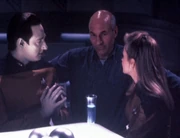
Patrick Stewart directing Spiner and Scarabelli
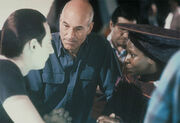
Rehearsing with Spiner and Whoopi Goldberg
- This is the first episode to be directed by Patrick Stewart . For advice, Stewart turned to Jonathan Frakes . Frakes recalled, " We had a couple of conversations. He was fabulous and took to it beautifully. He's a very sensitive man and he did a great job. He was also lucky that he got a Data show as his first. Brent [Spiner] really is an incredible actor with unbelievable range and technique, and certainly the most popular character, so it's a real plus to get that combination. " ( Captains' Logs: The Unauthorized Complete Trek Voyages , p. 222) Stewart also spent much time talking to the show's original cinematographer, Edward R. Brown about his directorial debut. (" Departmental Briefing Year Four - Production ", TNG Season 4 DVD special feature)
- Stewart recalled, " I was a virgin then. Those seven days that I worked on 'In Theory' were seven of the most exciting days of my career. They were so intense. " ( Captains' Logs: The Unauthorized Complete Trek Voyages , p. 222)
- Noting that the series assigned directors by lot, Stewart added, " I was very lucky to get a simple little love story to direct. I was lucky to have Brent Spiner as my leading man and indeed Brent was to be my leading man in the first three of the five episodes I directed. I had a fabulous guest star performance by Michele Scarabelli . I had no big sets or Klingon Great Halls or shoot 'em ups; there were no epic scenes. I had to simply concentrate on the basics of camera movement and structure and, more than anything else, work with the actors on the scenes. " ( Captains' Logs: The Unauthorized Complete Trek Voyages , p. 222)
- "In Theory" was filmed between Monday 1 April 1991 and Tuesday 9 April 1991 on Paramount Stage 8 and 9 . A note on the call sheet of Monday 8 April 1991 reminded the cast and crew about the time change and to set the clocks forward one hour. Second unit and insert shots were filmed on Thursday 18 April 1991 on Paramount Stage 8 and 9.
- At the beginning of Act 2, the piece played by the woodwind quintet in which Data performed is Anton Reicha's Wind Quintet in E-flat major .
- In Act 4, when Data is cleaning up Jenna's quarters, he sings " Che Gelida Manina ," from the Italian opera " La Bohème " by Giacomo Puccini . The Italian lyrics that he sings are: "Che gelida manina, se la lasci riscaldar. Cercar che giova?" (What a frozen hand, let me warm it for you. What's the use of searching?)
- Composer Jay Chattaway remembers, " The most demanding requirement for that episode was coming up with a musical device that would work for an android. I don't know whether or not Data has emotional feelings, but he was depicted in the show as feeling – in his own android way – an emotional relationship with someone. I used an EWI (Electronic Wind Instrument) to produce Data's musical voice. A musician actually blows into the instrument like any non-electric wind instrument, so it's able to capture all the same emotional nuances, yet it drives a battery of synthesizers. What comes out is this eerie, spacey marriage of man and machine. The end result is as unique as Data – not quite alive, but not totally artificial. I thought Brent Spiner pulled it off well. He's a very musical person, and in that episode, he actually sings an opera aria. Also, his album [ Ol' Yellow Eyes is Back ] is quite good. " ( The Official Star Trek: The Next Generation Magazine issue 18 , p. 35)
Continuity [ ]
- While having a "lovers' quarrel", Data says angrily " You're not my mother ", using a contraction. When Jenna questions him, he explains calmly " You are not my mother. " This might indicate that the initial phrase was specifically programmed with the contraction, but the repeat without a contraction is a unique form of the "no contractions" contradiction. Data also says " Honey, I'm home! " when he enters Jenna's quarters, and " I'll join you ", when asking Jenna which drink, she would prefer. These may also have been programmed phrases.
- This is the last episode featuring Data's cat, Spot , as a Somali cat. After this episode, Spot was portrayed as an orange short-hair tabby.
- After the observation room's brief exposure to space, Data makes note of changes in the transparent aluminum alloy (the windows), giving reference to the same alloy Montgomery Scott introduced as a bargaining chip in Star Trek IV: The Voyage Home .
- The nebula appears to be a recolored version of the Mutara Nebula from Star Trek II: The Wrath of Khan .
- This is the only episode with scenes inside one of the torpedo bays of the Enterprise -D.
Reception [ ]
- For the Star Trek: Fan Collective - Captain's Log DVD collection, Stewart selected "In Theory" as his favorite episode of the series.
- When asked whether there were any episodes he had written that he felt were under-recognized, Ronald D. Moore remarked, " I guess I have a fond memory of the A-story in "In Theory" and always felt people didn't quite give that one its due. " ( AOL chat , 1997 )
- Ron Moore disliked having the space anomaly B-story in the episode, describing it as being representative of the "hamstringing' structure that Star Trek: The Next Generation had. He noted, " On Deep Space Nine you don't have that looming over your head all the time, so it expands the kinds of stories you can do. " ( Captains' Logs Supplemental - The Unauthorized Guide to the New Trek Voyages , pp 78-79)
- Brannon Braga had similar thoughts, calling this an example of where the A-B format didn't work. He remarked, " I just wanted to see more of the Data arc. I didn't want to see that other story at all. It was interesting with that woman through the floor, nice imagery, but that's it. You really want to go back to the other thing. " ( Captains' Logs: The Unauthorized Complete Trek Voyages , p. 235)
- A mission report for this episode by John Sayers was published in The Official Star Trek: The Next Generation Magazine issue 17 , pp. 51-54.
Video and DVD releases [ ]
- Original UK VHS release (two-episode tapes, CIC Video ): Volume 50, 8 June 1992
- Star Trek - Music Box VHS collection.
- UK re-release (three-episode tapes, Paramount Home Entertainment ): Volume 4.8, 1 October 2001
- As part of the TNG Season 4 DVD collection
- As part of the Star Trek: Fan Collective - Captain's Log collection – chosen by Patrick Stewart as his favorite episode of the series
Links and references [ ]
Starring [ ].
- Patrick Stewart as Capt. Jean-Luc Picard
- Jonathan Frakes as Cmdr. William Riker
Also starring [ ]
- LeVar Burton as Lt. Cmdr. Geordi La Forge
- Michael Dorn as Lieutenant Worf
- Gates McFadden as Dr. Beverly Crusher
- Marina Sirtis as Counselor Deanna Troi
- Brent Spiner as Lt. Commander Data
Guest stars [ ]
- Michele Scarabelli as Jenna D'Sora
- Rosalind Chao as Keiko O'Brien
- Colm Meaney as Miles O'Brien
- Pamela Winslow as McKnight
Special guest star [ ]
- Whoopi Goldberg as Guinan
Co-star [ ]
- Majel Barrett as Computer Voice
Uncredited co-stars [ ]
- Rachen Assapiomonwait as Nelson
- Joe Baumann as Garvey
- Gary Baxley as Thorne
- Thomas J. Booth as civilian
- Michael Braveheart as Martinez
- Max Cervantes as operations officer
- Nyra Crenshaw as operations officer
- Gerard David, Jr. as operations ensign
- Wendy Davies as sciences officer
- Denise Deuschle as sciences officer
- Jeremy Doyle as operations ensign
- Keith Gearhart as sciences officer
- Michele Gerren as sciences officer
- Melanie Hathorn as sciences officer
- Ritt Henn as alien bassoonist
- Hunt as operations officer
- Mark Lentry as civilian
- Phil Mallory as French horn player
- Marin as command officer
- Jeri McBride as sciences officer
- Lorine Mendell as Diana Giddings
- Rad Milo as command ensign
- Michael Moorehead as civilian
- Brandy Pickett as sciences officer
- Keith Rayve as command ensign
- Denise Lynne Roberts as Patti
- Joycelyn Robinson as Gates
- Georgina Shore as Van Mayter
- Curt Truman as command officer
- K. Uchizono as civilian
- Guy Vardaman as Darien Wallace
- Harry Young as sciences officer
- Female sciences officer
- Ten Forward waiter #1
- Ten Forward waiter #2
Stand-ins [ ]
- Arlene – stand-in for Michele Scarabelli
- Karin Baxter – stand-in for Rosalind Chao
- Brett – stand-in for LeVar Burton
- Candace Crump – stand-in for Whoopi Goldberg
- Nora Leonhardt – stand-in for Marina Sirtis
- Tim McCormack – stand-in for Brent Spiner
- Lorine Mendell – stand-in for Gates McFadden and Pamela Winslow
- Linda Robertson – photo double for Pamela Winslow
- Richard Sarstedt – stand-in for Jonathan Frakes and Colm Meaney
- Dennis Tracy – stand-in for Patrick Stewart
- James Washington – stand-in for Michael Dorn
References [ ]
access tube ; accident ; adolescence ; advice ; aesthetic criteria ; affection ; agreement ; air pressure ; alloy ; anomaly ; apparel ; arrival ; Arton, Jeff ; assumption ; atmosphere ; atmospheric decompression ; attention ; audience ; bassoon ; bearing ; Boleyn, Anne ; book ; " Book of Love "; bow ; bridge connector ; Calaman sherry ; casualty ; Che gelida manina ; chapter ; children ; choice ; clarinet ; cleaning processor ; close range ; closet ; coda ; colleague ; color ; communicator ; compliment ; composition ; computational environment ; computer ; concentration ; contrapuntal ; cookout ; coordinates ; corridor ; course ; cryogenic control conduit ; crystilia ; damage ; damage report ; dark matter ; dark matter nebula ; dark matter particle illumination test ; day ; death ; deck ; Denevian mead ; densitometry ; density ; deuterium ; devil ; diameter ; Dickens, Charles ; dilithium matrix ; dinner ; disappointment ; dispersal pattern ; distance ; dizziness ; door ; door sensor ; D'Sora's family ; electrical current ; EM scanner ; emotion ; emotional release ; environmental compensation sequence ; estimated time of arrival ; event ; evidence ; experiment ; explanation ; explosive decompression ; family ; feeling ; feet ; fireworks ; floor ; flow rate ; flute ; fragrance ; French horn ; frequency domain ; friend ; friendship ; fructose ; Galaxy -class decks ; girlfriend ; gift ; glucose ; hair ; heading ; " hello "; Henry VIII ; Henry VIII's huntsmen ; history ; historical figure ; hour ; hull breach ; Human ; humanoid ; hundred : huntsman ; hypothesis ; illumination ; impulse nacelle ; inertial damper ; inertial dampening field ; information ; interpersonal dynamics ; intimacy ; intruder ; investigation ; kilometer ; kiss ; Klingon ; krellide power cell ; L-U band ; launch bay one ; lifeform ; light hour ; lip ; literature ; Love's Labour's Lost ; love ; love affair ; lovers' quarrel ; lux ; M class ; malfunction ; manual control ; Mar Oscura Nebula ; Mar Oscura Nebula planets ; marriage ; mate ; matter/antimatter containment pod ; meal ; mechanism ; memory ; meaning ; mental distraction ; meter ; microfusion thruster ; Milky Way Galaxy ; million ; mistake ; monosaccharide ; motif ; music lesson ; navigational input ; navigational system ; need ; neo-primitive period ; night ; number one ; oboe ; online ; opinion ; opportunity ; order of magnitude ; orderliness ; painting ; palate ; paragraph ; parameter ; performance ; perimeter ; person ; phenomenon ; photon torpedo casing ; phrasing ; place ; poltergeist ; Prakal II ; Prakal II mixed drink ; program ; programming ; quality ; question ; radiation level ; rate ; ready room ; reason ; red alert ; rehearsal ; relationship ; replicator ; report ; resource : rhythmic pattern ; risk ; role ; role model ; romantic liaison ; romantic love ( romantic relationship ); room ; sarium krellide ; Saurian brandy ; science section ; science station ; second opinion ; secondary deuterium supply ; section ; sector containing the Mar Oscura Nebula ; security ; security sweep ; sensor scan ; sentient ; sequencer ; shuttlecraft ; " silver tongue "; socks ; sound ; soup ; space ; spatial deformation ; spirit ; Starbase 260 ; starboard ; structural damage ; subject ; subroutine ; subspace distortion ; subspace field ; suggestion ; summer ; survey ; survey probe ; systems diagnostic ; Targ milk ; Telemarius IV ; telemetry link ; tempo ; " the cat's out of the bag "; theory ; thought (aka thinking ); thousand ; time continuum ; " to be on the safe side "; torpedo bay ; transceiver ; transparent aluminum ; tricorder ; turbolift ; Type 15 shuttlepod ; Tyrinean ; Tyrinean blade carving ; variable ; variety ; vase ; Voltaire ; warp field ; week ; wife ; Wind Quintet in E-flat major ; window ; would-be ready room guard
Other references [ ]
- Shuttlepod Systems 0451: adaptive computer command ; attitude control ; calibration rate command ; doppler sequence ; error checking ; nav program ; predictive nav input ; sequence vector analysis ; telemetry system
Unused production references [ ]
analogy ; carriage ; pothole ; re-routing sequence ; structural integrity field ; thermal control sub-system ; W particle
External links [ ]
- " In Theory " at Memory Beta , the wiki for licensed Star Trek works
- " In Theory " at Wikipedia
- "In Theory" at StarTrek.com
- " In Theory " at MissionLogPodcast.com , a Roddenberry Star Trek podcast
- "In Theory" script at Star Trek Minutiae
- " In Theory " at the Internet Movie Database
Den of Geek
Revisiting Star Trek TNG: In Theory
James' Star Trek: The Next Generation episode-by-episode odyssey continues with In Theory...
- Share on Facebook (opens in a new tab)
- Share on Twitter (opens in a new tab)
- Share on Linkedin (opens in a new tab)
- Share on email (opens in a new tab)
This article comes from Den of Geek UK .
This review contains spoilers.
4.25 In Theory
Ad – content continues below
As the Enterprise prepares to explore a strange dark matter nebula, Data and well-known Enterprise crew member Lieutenant (Junior Grade) D’Sora, with whom he has a long-standing platonic relationship that just happened to develop entirely off-screen, are modifying a torpedo for surveying purposes. As she explains her feelings about a recent break-up, Data offers her a cold unfeeling robot shoulder to cry on.
Tentatively, she attempts to get closer to Data. It isn’t long before they’re having dinner with the O’Briens (god help us) and chatting with some familiarity. Naturally, she decides to take things to the next level: kissing. Data reacts in exactly the way we all would if a strange woman kissed us: he goes to Whoopi Goldberg for advice.
Data explains to Guinan that D’Sora gave him a passionate kiss in the torpedo bay, which is understandably confusing for him because it’s more typical to give someone a passionate kiss in the mouth. Data is encouraged to visit other crew members for advice, receiving a selection of hilarious (but uniformly bad) encouragement. My favourite is Picard, who says he knows nothing about women and will let Data know the moment he does. Though personally, I think he probably could’ve done better than asking La Forge for help when he’s A) best-remembered for falling in love with a holodeck recreation of a married woman and B) still getting over some pretty severe brainwashing (don’t worry, he’s recovering well).
Still, with a collection of dysfunctional pointers under his belt (does Starfleet have belts?) Data embarks on a romantic relationship with D’Sora, informing her that he’s come up with a selection of romantic subroutines (and domroutines?). Unfortunately they’re all garbage, apparently pieced together from 1950s sitcoms, and cause Data to act like he’s got a loose wire. D’Sora does her best to encourage Data, but soon realises that an emotionless robot is probably no place to look for romantic validation.
Meanwhile, the Enterprise crew is starting to notice lots of strange occurrences, like things falling off stuff and Data’s cat escaping and the meeting room undergoing a momentary explosive decompression. This plot is pointless in the extreme and largely ignored until the moment when a crew member dies. The problem is that some weird anomalies from the nebula are dematerialising random bits of the ship for a few seconds at a time and will eventually, at some random point in the future, blow up something dangerous just out of sheer probability.
Unable to simply fly to safety because the Enterprise isn’t easy enough to steer, the crew decide a shuttle flying ahead of the ship will allow them to detect the anomalies in advance. Rather than pilot the shuttle remotely, or some other sane plan of action, Picard insists he sit in the driver’s seat. Things get pretty sketchy as the shuttle takes damage from the anomalies, but Picard captains on. Will he make it? Well yeah, he’s the star of the series. If only they’d had a potentially expendable guest star in the cast.
Speaking of D’Sora, with the Enterprise safe, she decides to dump Data, acknowledging that she’s gone from one emotionally unavailable man to someone who’s essentially a speak & spell with yellow contact lenses, and that’s not a trade-up. Luckily, Data has no emotions so he cannot hope to experience the soul-rending mixture of shame, embarrassment, sorrow, self-doubt, regret and general existential desolation that accompanies a break-up. The episode ends with him picking up and stroking his cat in what amounts to an unnecessarily graphic metaphor about how quickly he’ll be able to move on from this failed relationship. Mate, we should all be so lucky.
Get the best of Den of Geek delivered right to your inbox!
TNG WTF: So you’re watching what is a fairly frothy episode about an android in love (or not) and then BAM: a crew member falls into a space-hole, gives a blood-curdling scream and is then discovered dead, embedded in the floor with her eyes frozen open and blood trickling down her face. What the Actual. I mean, I get that Star Trek can encompass a variety of tones but this one goes from Four Weddings And A Funeral to The Shining in the space of about 3 seconds.
TNG LOL: There’s a lot of very funny stuff in this episode but Worf suggesting they step up to Red Alert because Picard’s book fell through a table is probably my favourite. You can take the Klingon out of the fight…
To Boldly Go: HOLD UP EVERYONE. The Enterprise is preparing to enter an unexplored dark matter nebula. That… is actually some pretty bold going!
Mistakes and Minutia: Patrick Stewart directed this episode, which might be why he also gets the chance to fly a shuttlecraft and put himself in actual danger. Was Frakes paying off the rest of the directing team? Almost definitely.
Also Data uses a bunch of contractions in this episode, including the pretty memorable examples, “You’re not my mother!” and “Honey, I’m home!” – of course it makes NO SENSE that he doesn’t use them anyway because anyone with even a basic knowledge of programming could write a line of code that created contractions and I’m only the eighty millionth person to have made that assertion so let’s waste no more time on it.
Better question: why does Data use the non-existent word “Nebuli” instead of “Nebulae” when he’s using the plural? I have an answer: 350 years of evolving linguistics.
Time Until Meeting: 34:56. The ship is in immediate, deadly peril and a crew member has already died, so let’s sit down and chat about what might be happening in a room which recently underwent a sudden unexplained decompression. Sounds good.
Captain’s Log: This episode had a chance to be one of the greats. The idea of Data’s first romance is simply ripe for the picking, and that plotline has a reasonably light touch with some wonderful character interactions. Data asking the senior staff for advice is, I’m confident in saying, a pretty much perfect sequence.
So what went wrong? For me, it hurts the episode that Data and D’Sora don’t have a lot of chemistry (or rather, the actors don’t) because things might have clicked a lot more readily if they did. I can’t believe D’Sora’s attracted to him, so I’m never really invested in it.
A bigger problem is that the B-plot has absolutely nothing to do with the A-plot on a textual or thematic level. The best episodes dovetail the main and sub plots to create a glorious thematic knot, and for me the way to do that would’ve been to have Data and D’Sora piloting together (either both in the shuttle, or one on the Enterprise and one in the shuttle) at the end. As it is, Picard’s there, doing a competent job but in jeopardy that doesn’t do anything to further the story.
It’s telling that the conclusion of the episode doesn’t really have anything to do with what happened before, D’Sora just decides that she made a bad decision at some point while off screen. Far be it for me to tell writers how to do their job 25 years too late, but surely the turning point should have occurred on-screen and during the Enterprise’s escape from the nebula?!
Without that tie-in, what we get are essentially two completely different episodes happening at the same time. Both of them good, but what they were doing in the same 45 minute block of time I don’t know.
Log in or sign up for Rotten Tomatoes
Trouble logging in?
By continuing, you agree to the Privacy Policy and the Terms and Policies , and to receive email from the Fandango Media Brands .
By creating an account, you agree to the Privacy Policy and the Terms and Policies , and to receive email from Rotten Tomatoes and to receive email from the Fandango Media Brands .
By creating an account, you agree to the Privacy Policy and the Terms and Policies , and to receive email from Rotten Tomatoes.
Email not verified
Let's keep in touch.

Sign up for the Rotten Tomatoes newsletter to get weekly updates on:
- Upcoming Movies and TV shows
- Trivia & Rotten Tomatoes Podcast
- Media News + More
By clicking "Sign Me Up," you are agreeing to receive occasional emails and communications from Fandango Media (Fandango, Vudu, and Rotten Tomatoes) and consenting to Fandango's Privacy Policy and Terms and Policies . Please allow 10 business days for your account to reflect your preferences.
OK, got it!
Movies / TV
No results found.
- What's the Tomatometer®?
- Login/signup
Movies in theaters
- Opening this week
- Top box office
- Coming soon to theaters
- Certified fresh movies
Movies at home
- Fandango at Home
- Netflix streaming
- Prime Video
- Most popular streaming movies
- What to Watch New
Certified fresh picks
- Kingdom of the Planet of the Apes Link to Kingdom of the Planet of the Apes
- The Fall Guy Link to The Fall Guy
- The Last Stop in Yuma County Link to The Last Stop in Yuma County
New TV Tonight
- Interview With the Vampire: Season 2
- After the Flood: Season 1
- Bridgerton: Season 3
- Outer Range: Season 2
- The Big Cigar: Season 1
- Harry Wild: Season 3
- The Tonight Show Starring Jimmy Fallon: Season 11.1
- RuPaul's Drag Race: All Stars: Season 9
- Spacey Unmasked: Season 1
- The Killing Kind: Season 1
Most Popular TV on RT
- Dark Matter: Season 1
- Bodkin: Season 1
- Baby Reindeer: Season 1
- A Man in Full: Season 1
- Fallout: Season 1
- Doctor Who: Season 1
- Sugar: Season 1
- The Sympathizer: Season 1
- Blood of Zeus: Season 2
- Them: Season 2
- Best TV Shows
- Most Popular TV
- TV & Streaming News
Certified fresh pick
- Doctor Who: Season 1 Link to Doctor Who: Season 1
- All-Time Lists
- Binge Guide
- Comics on TV
- Five Favorite Films
- Video Interviews
- Weekend Box Office
- Weekly Ketchup
- What to Watch
Spike Lee Movies and Series, Ranked by Tomatometer
Box Office 2024: Top 10 Movies of the Year
Asian-American Native Hawaiian Pacific Islander Heritage
What to Watch: In Theaters and On Streaming
Weekend Box Office Results: Kingdom of the Planet of the Apes Reigns Supreme
Movie Re-Release Calendar 2024: Your Guide to Movies Back In Theaters
- Trending on RT
- Kingdom of the Planet of the Apes
- The Last Stop in Yuma County
- Amazon Movies
- TV Premiere Dates
Star Trek: The Next Generation – Season 4, Episode 25
Where to watch, star trek: the next generation — season 4, episode 25.
Watch Star Trek: The Next Generation — Season 4, Episode 25 with a subscription on Paramount+, or buy it on Fandango at Home, Prime Video.
More Like This
Cast & crew.
Patrick Stewart
Capt. Jean-Luc Picard
Jonathan Frakes
Cmdr. William Riker
LeVar Burton
Lt. Cmdr. Geordi La Forge
Michael Dorn
Gates McFadden
Dr. Beverly Crusher
Marina Sirtis
Counselor Deanna Troi
Episode Info
Star Trek: The Next Generation
Cast & Crew
Whoopi Goldberg
Michele Scarabelli
Lt. Jenna D'Sora
Colm Meaney
Chief Miles O'Brien
Rosalind Chao
Keiko O'Brien
Pamela Winslow
Ensign McKnight
Information
© 2013 CBS Corp. All Rights Reserved.
Accessibility
Copyright © 2024 Apple Inc. All rights reserved.
Internet Service Terms Apple TV & Privacy Cookie Policy Support

- Web Channels
- Star Trek: The Next Generation

While the Enterprise explores a nebula with unusual properties, Data becomes involved with a crew member.

Whoopi Goldberg
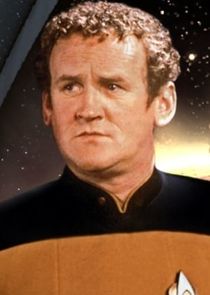
Colm Meaney
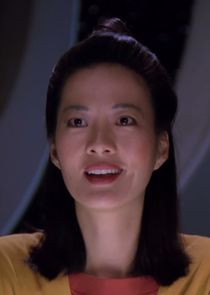
Rosalind Chao
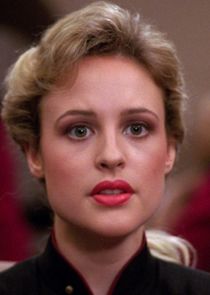
Pamela Winslow
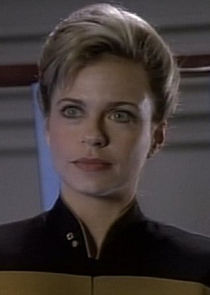
Michele Scarabelli
Cast appearances.
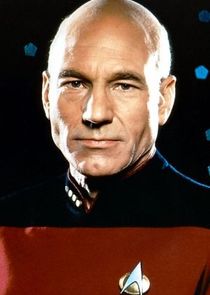
Patrick Stewart
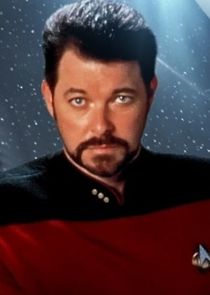
Jonathan Frakes
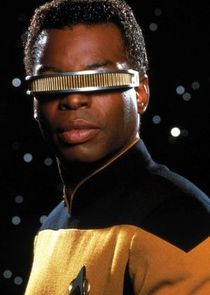
LeVar Burton
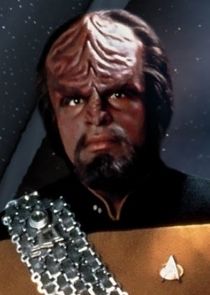
Michael Dorn

Gates McFadden
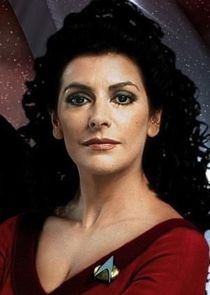
Marina Sirtis
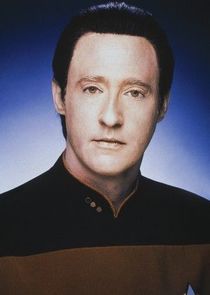
Brent Spiner
Episode discussion.
No comments yet. Be the first!

Star Trek The Next Generation: In Theory

8 comments:

I really enjoyed this one. It was so clever and on the nose. What would happen if a crew member decided to romantically pursue Data? Yes, exactly this. And Brent Spiner's performance was adorable. I think my favorite part was the string of scenes asking advice of every single one of his friends. It was so like Data. The woman in the floor thing shocked me the first time I saw it. Ick.
Excellent review, Mallena. And I am still creeped out by the woman in the floor - a visual that is shocking without being gory - almost out-of-place in this episode, which is rather sweet.
Greetings!! First time commenter here, although I've been lurking on Doux Reviews for a few years now. I am so thankful that you review episodes of ST:TNG, especially since you do it with so much love and respect for the show. I didn't know that I was into sci-fi until I started watching TNG as a kid, and I didn't know what it meant to be a fan until I became obsessed with Data. Watching this episode the first time around was fascinating for me, mostly because I thought Data was the most fascinating character in existence. In retrospect, I think my pre-teen self empathized with Data more than Jenna, mostly because I always assumed that Data really did have some version of feelings (and I feel Brent Spiner often alluded to that in his performance throughout the series). Or maybe I just badly wanted it to be true. In any case, I remember feeling badly for him when their relationship ended. Now that I've experienced a range of good and bad relationships, I can appreciate how on-the-nose this episode is. Very clever. I haven't seen this episode in a while, but remember re-watching it as an adult and feeling more awkward watching the two of them together. Even so, I appreciated the humor more! I love that moment when Data tries to ask Captain Picard for advice and he abruptly stops Data before he can even ask anything. He knew Data was making the rounds, asking all his friends for advice, and Captain Picard didn't want to have anything to do with it. It was a great comic moment for Patrick Stewart. Brent Spiner's acting was Data perfection. It reminded me of his performance in Data's Day. Watching episodes like these makes me think back on how badly I fantasized about being a high-ranking member of the Enterprise crew and befriending Data. Who am I kidding? I still fantasize about that. Side note: I got to meet Brent Spiner at a comic con this past fall and it was amazing. I was shaking when I walked up to him. I said, "Data is my favorite sci-fi character of all time." He answered with, "I played Data!!" Then I told him that Star Trek is hugely responsible for shaping my sense of morality and I thanked him for his role in that. He gave me a hug. He was a complete sweetheart. *swoon*
Roxanium, congratulations on posting your first comment! The first of many, I hope. I'm also a huge fan of Brent Spiner. He created such a unique, complicated and lovable character out of what could have been such a nothing part. It was always obvious to me that the writers loved writing for him (and for Patrick Stewart, of course). "In Theory" was Data at his best.

Roxanium, congrats for joining the party. I loved ST:TNG from the very first episode that I watched so many years ago and I also remember thinking that Data made the show so much more interesting. Thanks for commenting, Victoria. I've never watched Rome so I can't really comment on your reviews. Romans were never my thing, though I did like Rory the Roman on Doctor Who. Maybe you will review a show that I did watch, sometime, that would be nice.
Very nice review. Weirdly I thought it was kind of understandable for someone to be attracted to data in a world of aliens and non-organic life forms. After all Data is considered to be sentient. I always really enjoyed this episode.
Thanks Skye, I'd love Data as a friend, but I don't know about more than that. "Humans" on AMC has very life-like robots that a lot of people don't seem to have a problem with loving, so who knows?

Lots of great points. I too both despise muskrat love and found the crew woman stuck in the floor creepy. I love the different pieces of advice Data got, and especially Picard's. I'm not sure if Data would be the best or worst for a relationship since I'm no expert myself, so as far as being attracted to an android, it's difficult for me to say. It does feel odd from our current perspective, but not actually having such an advanced android around to compare, it's not something I can say yea or nay too.
We love comments! We moderate because of spam and trolls, but don't let that stop you! It’s never too late to comment on an old show, but please don’t spoil future episodes for newbies.
In Theory Stardate: 44932.3 Original Airdate: 3 Jun, 1991
<Back to the episode listing
Star Trek ® and related marks are trademarks of CBS Studios Inc . Copyright © 1966, Present. The Star Trek web pages on this site are for educational and entertainment purposes only. All other copyrights property of their respective holders.
Star Trek: The Next Generation : "The Mind's Eye"/"In Theory"
"The Mind's Eye"
Or The One Where Reading Rainbow Gets His Wires Crossed
You gotta love the blind spots of the TNG writing team. On the one hand, there's the holodeck, perhaps the most perfectly insane entertainment device every created for a science fiction show; it can give you anything, simulate anything, and make you part of a story, and if you're really lucky, it can even generate a powerful artificial intelligence seemingly at random. I'm not sure it's the ultimate gaming experience (I think most of us enjoy sitting on our asses for extended periods of time too much—"perfect realism" in games is an overrated concept), but it does indicate a logical endpoint in the development process. It's a stunning achievement in design, programming, and execution.
Related Content
And on the other hand, we have Geordi, sitting alone in a shuttlecraft for however many hours, listening to calypso music and playing trivia games against the computer. Awful trivia games, I might add. "The Mind's Eye" aired in May of 1991. The Game Boy had been around for 2 years; books for… quite a few centuries more than that. Surely, one of the writers on staff had had ample opportunity to pick up one or both.
Still, that cold open had a great "travel always kind of sucks" feel to it, as Geordi's stuck in, essentially, a small box, trying to make the best of it the only way he knows how: by being a huge freaking dork. And then a Romulan ship decloaks right off the starboard bow, and Geordi just about craps his pants. Because hey, who wouldn't.
"Eye" is a rock solid TNG episode, playing off of continuity for long-term fans (like us!) and, regardless of how well you know the backstory, delivering a solid, exciting, and sharp thriller. Last week's episodes were all about ambition, exploring high concepts which paid off more through ambition than actual execution. "Eye" is still ambitious, but the hooks here (brainwashing, political intrigue, betrayal) aren't quite so mind-bending. Well, okay, apart from the literal mind-bending part. What I'm getting at is that this episode isn't trying to challenge how you look at the world or make you rethink your views on sexuality and emotional attachments. It's just trying to kick some ass, and it does that very, very well.
For starters, Geordi gets tortured! In that he gets these crazy implants stuck in his VISOR equipment that put him under the control of some very not nice people. Ah, Romulans. Is there any evil they won't sink to? It's all part of a plot to upset Federation/Klingon relations; rebels on the Klingon colony of Krios are fighting for resistance, and the Governor of Krios, Vagh, is accusing the Federation of working with the rebels. This would be bad news for everyone, except, of course, the Romulans and those Klingons who kind of wish everything could go back to the way it was, with all the villainy and the gloating and the killing humans. The Romulans have been providing the rebels with Federation phaser rifles, but Geordi and Data are able to prove easily enough that those rifles didn't actually come from Starfleet. That's okay, though. The bad guys have other tricks up Geordi's sleeve.
It's impressive how much "Eye" manages to pack into a single hour, without ever feeling particularly rushed. We've got Geordi's time aboard the Romulan ship and his "training," we've got the political situation with the Klingons, which means a few references to Worf's disgrace, and we've got Geordi's attempts to solve a mystery that he himself is responsible for, even if he isn't aware of it. All of this fits together quite well, and there's no confusion here or convoluted plotting that I noticed. One of the benefits of TNG 's somewhat casual approach to continuity is that, when the show does make references to it's past, it rarely seems forced or unnecessary. There's no "This is just like that time we fought that nest of Gundarks" moment here. Ambassador Kell references Worf's disgrace as a potential cause of discord in dealing with Governor Vagh, and Vagh references Picard's reputation among Klingons. Both these moments might pass under the radar of someone new to the show, but for those who catch them, it creates a sense of a greater story behind the story we're watching. We have to fill in most of the gaps ourselves, but it helps the illusion that all this time we've been watching Beverly hook up with space slugs, the Klingon Empire has been on the verge of collapse. That's efficiency right there, and that kind of smart writing (Rene Echevarria is credited with the teleplay) pervades the episode.
For example, we only get a couple of scenes showing us how the Romulans break Geordi's mind down, but those scenes are enough to convince us that he's a threat once he's back on the Enterprise . First, they explain how his VISOR makes him especially vulnerable to cortical implants, since the pre-existing tech can largely hide any new equipment. So Geordi gets hooked up to a freaky looking machine, and we're reminded how painful those white-eye contact lenses must be when they remove the VISOR. Second, we got a Manchurian Candidate style sequence in which the Romulans recreate Ten Forward on a holodeck and order Geordi to kill Chief O'Brien. Which he eventually does. We get some murky shots from Geordi's POV (the first we've seen of what the world looks like to him in a few seasons), and Geordi's casual "Can I sit with you guys" post-murder is appropriately chilling, but I think my favorite part of this scene doesn't happen till later in the episode. Once he's returned to active duty, Geordi seems largely okay, but then he wanders into the real Ten Forward, sees O'Brien sitting alone, and dumps his drink on the guy's shoulder. It's an appropriately weird moment, and it ties in nicely with Geordi's agonized conversation with Troi at the episode's end. While the Romulans are ultimately thwarted by Data and Picard, their plan nearly works, and it's impossible to know just how much damage they did to the Chief Engineer's brain.
There's also the nice touch of having Geordi put in charge of investigating his own crimes (his ultimate assignment is to assassinate Governor Vagh, but before he does that, he beams some weapons down to Krios to pin more blame on the Federation). As he has no idea that his mind has been tampered with, he investigates to the best of his abilities, and there's something darkly funny in the way he keeps casually mentioning himself as one of the few people who could've been responsible for what happened and how no one suspects him until it's nearly too late. The only real reason the Romulans' scheme doesn't work is that Data and Riker happen to notice some strange transmissions on an unusual frequency. Data investigates, and the episode climaxes with him looking over the shuttle Geordi was abducted from, while Geordi goes to take out Vagh. We know Data will figure out the danger before it's too late, just as we know something will prevent Geordi from committing murder, but it's to the episode's credit that this knowledge doesn't hinder the suspense. It's also nice that we don't get the "But Geordi, it's me, Data!" scene that seems par for the course for brainwashing storylines. Nobody talks Geordi out of firing the phaser; he's been programmed to do a job, and if not for Picard's quick reflexes, he would accomplished his objective.
For all its soppy nobility and utopian ideals, TNG can often be surprisingly stark in its conclusions. Here, it's the knowledge that part of what makes Geordi unique also makes him vulnerable and that even after the Romulan's efforts to control him have been detected, he's still left to struggle with memories (including a girlfriend named "Jonic") he can't believe are fake. There's also the fate of Ambassador Kell; once his treachery is revealed (he's been working with the Romulans and was Geordi's handler on the Enterprise ), the ambassador requests asylum. Picard says sure—once he's cleared his name of all charges. So basically, our captain sentences the bastard to brutal torture and execution at the hands of the people he betrayed. It's a long shot from the darkest the show has ever been, but it is good to remember that here, just like everywhere else, if you come at the King, you best not miss.
Stray Observation:
- All right, so that Wire quote was a little forced.
- There's a Romulan commander who stays cloaked in shadow during Geordi's kidnapping. She only has a couple of lines, but her voice sounds familiar. I wonder…
- I really hate that Geordi's headpiece is called "VISOR." It makes me think he belongs on a Saturday morning cartoon, fighting the forces of M.E.A.N. or something.
- I like that the Romulans gave Geordi a make-believe girlfriend. It's just that added touch of cruelty that makes them absolute dicks.
"In Theory"
Or The One Where Data Dates
"In Theory" is difficult to watch in spots. There are cringe-worthy moments aplenty here, from Data's love interest's attempts to flirt with a machine, to Data's attempts to respond to that flirtation in an appropriate manner. The episode's B-plot, which has the Enterprise trapped in a field of reality-distorting clouds, isn't anywhere near as odd, but it's also not particularly compelling, either. It doesn't tie into Data's storyline at all, and it ends with Picard piloting the ship to safety, which, while undeniably cool, is something we've seen before. As such, this is another episode that raises a lot of fascinating questions but doesn't quite have the knack of giving us enough answers to be satisfying or even completely realizing the complexity of the issues it raises. But while I didn't exactly love it, I'm happy it exists. I took some flack months ago when I said TNG was a good, not great, series. I'm not sure if I still stand by that; I am sure such a statement is largely irrelevant in the context of these discussions, since it doesn't really change my appreciation or my critical opinion of individual episodes. I do think, though, that if you wanted to make a case for this as a great series (and really, that's a case that could be very well made), a flawed, intermittently ridiculous episode such as this one would belong as much in your argument as undeniable classics like "Yesterday's Enterprise." "Theory" doesn't entirely work, but the fact that it was made at all, that this is a show that's willing to devote over half an episode to whether or not a robot can love and not give us a happy ending, is laudable.
Romantic relationships are strange, often uncomfortable, occasionally transcendent, and incredibly difficult to capture in fiction, because fiction, no matter how well-realized, tends to simplify human interactions. When we watch characters on a show, we know something of their history, and we can see actors reacting to each other and draw conclusions, but there are limits to our knowledge. So we draw certain conclusions. If two people seem to fit well together, if they have a certain level of chemistry, well, they should be a happy couple. If they're both good people, why wouldn't it work? We reduce emotional exchanges to algebraic equations, on the pretense that there's a cause and effect in matters of the heart that should be recognizable to everyone. But that's not really how it works. The difference between liking someone and loving them is incalculable, and it rarely makes practical sense. It's one of the few opportunities we mortals have to witness the sublime, as no matter how much we try to break ourselves down to a series of psychological stimuli/responses, we'll always miss that moment, that infinitesimal shift, that binds us to another. Dating sites will provide us with questionnaires establishing our type, and they'll have a certain degree of statistical success, but there's no precise calculation that can fathom the workings of the heart. Or, rather, the neuro-chemical reactions in our brain which we label as "heart."
Which is both profound and mundane in practice, I think, and most fiction tends to focus on the former, while inadvertently heightening the latter. "Theory" isn't really an exception, as TNG has never been a show that does relationships very well. What makes this work better than, say, the overheated goofiness of "The Host," is that we really aren't interested in an actual love affair here. We're more interested in how Data attempts to mimic what a love affair should be, and what he learns—or fails to learn—in the process. We've never seen Lt. Jenna D'Sora before now, and we won't see her again. She's not all that interesting in her own right, which is one of reasons "Theory" doesn't work quite as well as it should. We have no rooting investment in seeing her and Data make anything work; it's mostly just curiosity as to how it will fail, which is fun as far as it goes but takes some of the sting of an otherwise excellent final scene.
And really, a lot of the interaction between Data and Jenna doesn't flow like it should. There's no compelling reason given as to why Jenna suddenly gets into her head to make a play for Data, beyond the fact that she's just gotten out of a relationship, and Data is a very nice guy. That makes sense as far as it goes, but Data is such an oddity, and his oddness is so constantly and clearly on display, that you'd think there'd have to be something else to drive Jenna to act, some oddity about her personality that we never get to see. Yes, Data is relentless kind, helpful, and supportive. But… well, either she's a techno-fetishist, or she's been through so many abusive relationships that she desperately needs someone she can trust. Either of those would've made more sense than the sort of, "Eh, well, I guess it's a rebound thing" that we get here. Admittedly, both those options are dark enough that I'm not sure the show could've pulled them off, but I'm not sure I buy that anyone would so casually embark on a romantic relationship with a machine.
But then, it is the future after all, and we've seen our fair share of inter-species hook-ups before. Data doesn't look like a machine, exactly, and the impression we've gotten of dating on the Enterprise is pretty much "have at." So in that sense, the casualness of Jenna's initial decision makes a certain sense. It just doesn't speak very well for her as a character, because we're never given a sense that she's thought any of this through. Data does; before making his decision, he consults all his friends on the ship, which is as entertaining as these consultations nearly always are. Geordi: "No idea." Troi: "I advise caution." Worf: "Klingons fight for what they want! But if you hurt her, I'll kill you." Riker: "Go for it, dude. And if she decides to swing, let me know." Picard: "Eh, I have a spaceship to run."
So Data takes the plunge, and we get a handful of one-on-one scenes which are very, very odd. Data's literalism makes things difficult, as always (although his continued inability to grasp popular idiom is a grating and ill-considered as ever), and Jenna seems to realize almost at once that she's gotten herself in over her head. But they press forward. Data devises a program to engage with his girlfriend in the appropriate fashion, which means that we get to see Brent Spiner's smarm on full display; much like the bizarrely exaggerated gestures he makes towards physical intimacy, his efforts at flirting or warmth are too obviously false. There are plenty of people perfectly capable of faking emotion convincingly, and while I think the conclusion "Theory" arrives at, that Data just isn't ready to date (or else Jenna just isn't an appropriate match), is a good one, it would've made more sense if the two had, at least temporarily, made it work. It's pretty easy to ignore the rough patches in the early phases of a relationship, even if only one half of the match is really feeling it.
There's also the show's unsurprisingly asexual approach to the two's courtship. We don't need to return to Data's "fully functional" days, but much of this episode plays like a couple of elementary school kids playing at dating, as opposed to two supposed adults. We don't see any of their dates, and apart from a couple of chaste smooches, there's no indication that anybody's getting past the hand-holding stage. This makes a certain amount of sense for Data, seeing as how (apart from <shudder> Tasha) he doesn't get out much, but Jenna has supposedly been in adult relationships before. If everyone is so egalitarian about sex in the future, why wouldn't they hook up? Data is, in a sense, the greatest sex toy ever created. Even if she didn't intend to spend the rest of her life with him, you'd think Jenna would've at least poked around a bit to see which buttons did what.
Really, though, all this silliness is largely redeemed by the end of the episode. Jenna realizes what all of us have known the whole time: Neat as Data is, she can't inspire in him the same passion he inspires in her. There's no risk of him ever breaking her heart, but one of the things they don't tell you about love is, you have to have that risk. That's what makes it special; each moment you're with someone, you have to believe that even though though they could betray you, they won't. With Data, there's no danger, so there's no reward. She leaves, somewhat upset, and Data sits in his apartment, staring at the door. His cat rubs his leg, and Data picks Spot up and pets him. His eyes never leave the door. You don't know if he's processing what just happened, if he's trying to understand it, if in some dim way he was hurt by the loss. Or maybe he's just staring at the door because there's no good reason not to. It's the sort of eerie moment that happens in all of the good Data-centric episodes, that moment when you expect to see the curtain pulled back, and the man behind the mechanical wizard who's really pulling the strings. Instead, it's just Data. Staring at a door.
Stray Observations:
- Didn't really talk about the B-plot here, but, well, there wasn't much to talk about. An interesting hook, but it doesn't go anywhere.
- Gosh, women are just super crazy, y'know?
- "It's my ship, Will. I've got to do this." Um, why? And what? And look, was Picard off having his own subplot while all this crazy relationship stuff was going on? Like, maybe he had a crisis of confidence because he was getting older, and all those weird poltergeist-activities were making him fear he meet be going senile, and now he needs to risk his life and the lives of everyone on board the ship to prove he still has it. Because if that was happening, show, it would've been nice if you'd let us in on it.
Next week: We finish up the fourth season with "Redemption," and jump right into the fifth season with "Redemption II."
Celebrating Cats in Movies and Television.
Star trek: the next generation – “in theory”.
Original Air Date: June 1, 1991 Starring: Brent Spiner, Patrick Stewart, LeVar Burton Directed by: Patrick Stewart
Synopsis: As the Enterprise crew run tests on a dark matter nebula, a female crew member assigned to work with Lt. Data (Brent Spiner) on the scientific side of the tests shows romantic interest in him, leaving Data to question matters in love.
Kitty Cameo: Data’s pet cat Spot makes an appearance in this episode. Lt. Commander Geordi La Forge (LeVar Burton) catches Data, saying he found Spot running around loose.
The two discuss how Spot managed to get outside of the room but can find no answer, as the computer states no one entered the room and Spot could not have triggered the opening mechanism.
At the end of the episode when things don’t work out with the romance, Data is left alone at the dining table in his room. Spot comes up to him as if to comfort him.
Spot jumps into Data’s lap and Data pets the cat.
Final Mewsings: Cats know when we need comfort, even if we don’t know it ourselves.
Relevant Links:
Recent Posts
- Baby Reindeer (2024)
- Helluva Boss – “Seeing Stars”
- Hi Cat! (1989)
- Notes on a Scandal (2006)
- Loose Cannons (1990)
- Phantom of the Opera (1943)
- Gardenia (1979)
- Brooklyn Nine-Nine – “Terry Kitties”
- For Scent-imental Reasons (1949)
- Night Swim (2014)
- Abyssinian (8)
- Balinese (1)
- British Shorthair (6)
- Cornish Rex (3)
- Devon Rex (2)
- Exotic Shorthair (4)
- Himalayan (15)
- Japanese Bobtail (3)
- Maine Coon (6)
- Oriental Shorthair (3)
- Persian (81)
- Ragdoll (7)
- Scottish Fold (5)
- Siamese (104)
- Sphynx (11)
- Turkish Angora (1)
- Turkish Van (2)
- Cat Actor Profile (1)
- Cartoon Cat (205)
- Cat Attack (14)
- Cat Burglar Scene Stealer (636)
- Cat Cattle Call (72)
- Cat Credits (3)
- Catapult (24)
- Cinema Cat (1)
- Clockwork Cat (1)
- Faux Cat (16)
- Featured Feline (181)
- Kitten Cattle Call (2)
- Kitty Cameo (586)
- Kitty Carnage Warning (186)
- Poor Cat Screech (86)
- Purr Blur (354)
- Reality Cat (86)
- Spring-Loaded Cat (48)
- Bicolor (181)
- Black and White (163)
- Black Cat (471)
- Blue Point (4)
- Bobtail (3)
- Brown (117)
- Calico (101)
- Flame Point (2)
- Ginger (302)
- Ginger and White (111)
- Gray and White Cat (79)
- Gray Cat (159)
- Hairless (17)
- Kitten (342)
- Lilac Point (1)
- Long-Haired (437)
- Odd-Eyed (1)
- One-Eyed (4)
- Oriental (3)
- Seal Point (40)
- Short-Haired (1,430)
- Silver (21)
- Snowshoe (3)
- Tabby (889)
- Tabby and White (5)
- Torbie (10)
- Tortoiseshell (60)
- Tuxedo (222)
- White Cat (259)
- Yellow Cat (11)
- Action (146)
- Adventure (84)
- Animated (204)
- Biopic (32)
- Comedy (662)
- Comic Book (20)
- Crime (274)
- Documentary (25)
- Drama (677)
- Educational (41)
- Experimental (3)
- Family (151)
- Fantasy (117)
- Film Noir (32)
- Foreign (249)
- HIstorical (42)
- Home Movies (1)
- Horror (236)
- Industrial (1)
- Martial Arts (2)
- Mockumentary (4)
- Monster (4)
- Music Video (61)
- Musical (58)
- Mystery (131)
- Newsreel (60)
- Period Piece (2)
- Religious (2)
- Romance (146)
- Science Fiction (70)
- Sexploitation (2)
- Short Film (259)
- Silent (68)
- Soap Opera (4)
- Suspense (140)
- Television (297)
- Thriller (87)
- Travelogue (3)
- Western (45)
- Recent (1,767)
- Special Features (21)
- Uncategorized (1,995)
- Show Spoilers
- Night Vision
- Sticky Header
- Highlight Links

Follow TV Tropes
http://tvtropes.org/pmwiki/pmwiki.php/YMMV/StarTrekTheNextGenerationS4E25InTheory
YMMV / Star Trek: The Next Generation S4E25 "In Theory"
Edit locked.
- Captain Obvious Aesop : Don't fall in love with someone who can't love you back. How did anyone in the crew actually think that this was a good idea?
- Idiot Ball : Data's Literal-Minded qualities get taken up to eleven in this episode, which depicts him misunderstanding simple sayings like "Don't look at me" and "The cat's out of the bag."
- The idea of a woman ( or anyone ) getting involved in a relationship with an emotionless android could have gone in any different directions. It might have been far more interesting to have Data date someone who accepted him for himself instead of expecting him to be a conventional boyfriend. And it's frustrating that Data, after specifically being warned not to imitate human romance by Deanna, goes on to do just that instead of acting in a more natural fashion, as in his interactions with the other crewmembers. It was likely the most predictable and simplified version of the story the writers could have done.
- The "relationship with an android" plot was explored 20 odd years later in The Orville , a Spiritual Successor to the TNG era of Trek, slowing building towards Isaac and Claire entering a relationship, which happens in the episode "A Happy Refrain" . Brannon Braga was an intern at the time on TNG, and was an executive producer on The Orville .
Important Links
- Action Adventure
- Commercials
- Crime & Punishment
- Professional Wrestling
- Speculative Fiction
- Sports Story
- Animation (Western)
- Music And Sound Effects
- Print Media
- Sequential Art
- Tabletop Games
- Applied Phlebotinum
- Characterization
- Characters As Device
- Narrative Devices
- British Telly
- The Contributors
- Creator Speak
- Derivative Works
- Laws And Formulas
- Show Business
- Split Personality
- Truth And Lies
- Truth In Television
- Fate And Prophecy
- Edit Reasons
- Isolated Pages
- Images List
- Recent Videos
- Crowner Activity
- Un-typed Pages
- Recent Page Type Changes
- Trope Entry
- Character Sheet
- Playing With
- Creating New Redirects
- Cross Wicking
- Tips for Editing
- Text Formatting Rules
- Handling Spoilers
- Administrivia
- Trope Repair Shop
- Image Pickin'
Advertisement:
- More to Explore
- Series & Movies
Published Apr 10, 2024
A Brief History of the Progenitors in Star Trek
They designed life itself!
SPOILER WARNING: This article contains story details and plot points for Star Trek: Discovery 's "Red Directive ."

StarTrek.com
Captain Burnham's top-secret mission in the final season of Star Trek: Discovery has finally been revealed. But this time, the Discovery crew isn’t stopping a future-destroying A.I., or a lethal, extra-galactic force. Instead, they’re investigating the basic mysteries of why most species in the Star Trek universe look vaguely human.
As revealed in " Red Directive ," the search for technology used by ancient "Progenitors" sets-up a massive treasure hunt for the season. But, who are the Progenitors? What did Jean-Luc Picard know about the secrets of inter-species alien DNA? And how does all of this fit in with Gene Roddenberry’s earliest ideas for Star Trek ?
Here’s a brief history of the Progenitors, from the early 1960s, to the 24th Century, all the way to 2024, and the 31st Century.
The Real World-Origins of the Progenitors

"The Cage"
When the U.S.S. Enterprise first set out to seek out "new life and new civilizations," a huge swath of those alien lifeforms turned out to look a lot like human beings. And the primary reason for that, at least behind-the-scenes, was two-fold.
First, human actors are more affordable, and second, Gene Roddenberry wanted the classic Star Trek to avoid the sci-fi trope of "Bug-Eyed Monsters." And so, in one of the original 1964 pitch documents for Star Trek , Roddenberry floated the idea of "The Parallel Worlds" concept . The idea was that the format of Star Trek — from a writing and production standpoint — would generally deal with "...plant and animal life, plus people, quite similar to Earth. Social evolution will also have interesting points of similarity with ours."
Unlike a huge swath of science fiction on TV at the time, the promise of strange, new worlds, that were, in fact, populated by people , is something that set Star Trek apart, and was the cornerstone of what gave the series its humanist angle. But, the side effect of course, was an in-universe question — why were so many aliens humanoid?

The Old Ones, Sargon, and The Preservers

"The Paradise Syndrome"
The first two seasons of The Original Series are sprinkled with hints that, in the distant past, the galaxy was visited by super-powered aliens with technology far more advanced than anything in the Federation.
In " What Are Little Girls Made Of? ," we meet Ruk, an android built by "The Old Ones," an alien race capable of creating humanoid androids that were basically immortal. In " Return to Tomorrow ," the disembodied soul of Sargon, refers to humanity as "my children." While Dr. Muhuall says this idea flies in the face of evolutionary theory, Spock mentions the idea that aliens seeded life would "explain certain elements of Vulcan pre-history."
Then in Season 3, in " The Paradise Syndrome ," Bones and Spock tackle the question head-on. When they realize an ancient race of "Preservers" helped various humanoid species throughout the galaxy, the idea of an ancient alien race guiding and "seeding" a ton of humanoid species became less of a myth and more of a working theory. "I’ve always wondered why there were so many humanoids scattered through the galaxy," Bones says. To which Spock replies, "So have I. Apparently, the Preservers account for a number of them."
And then, the questions about an ancient humanoid species went answered. At least, until The Next Generation .
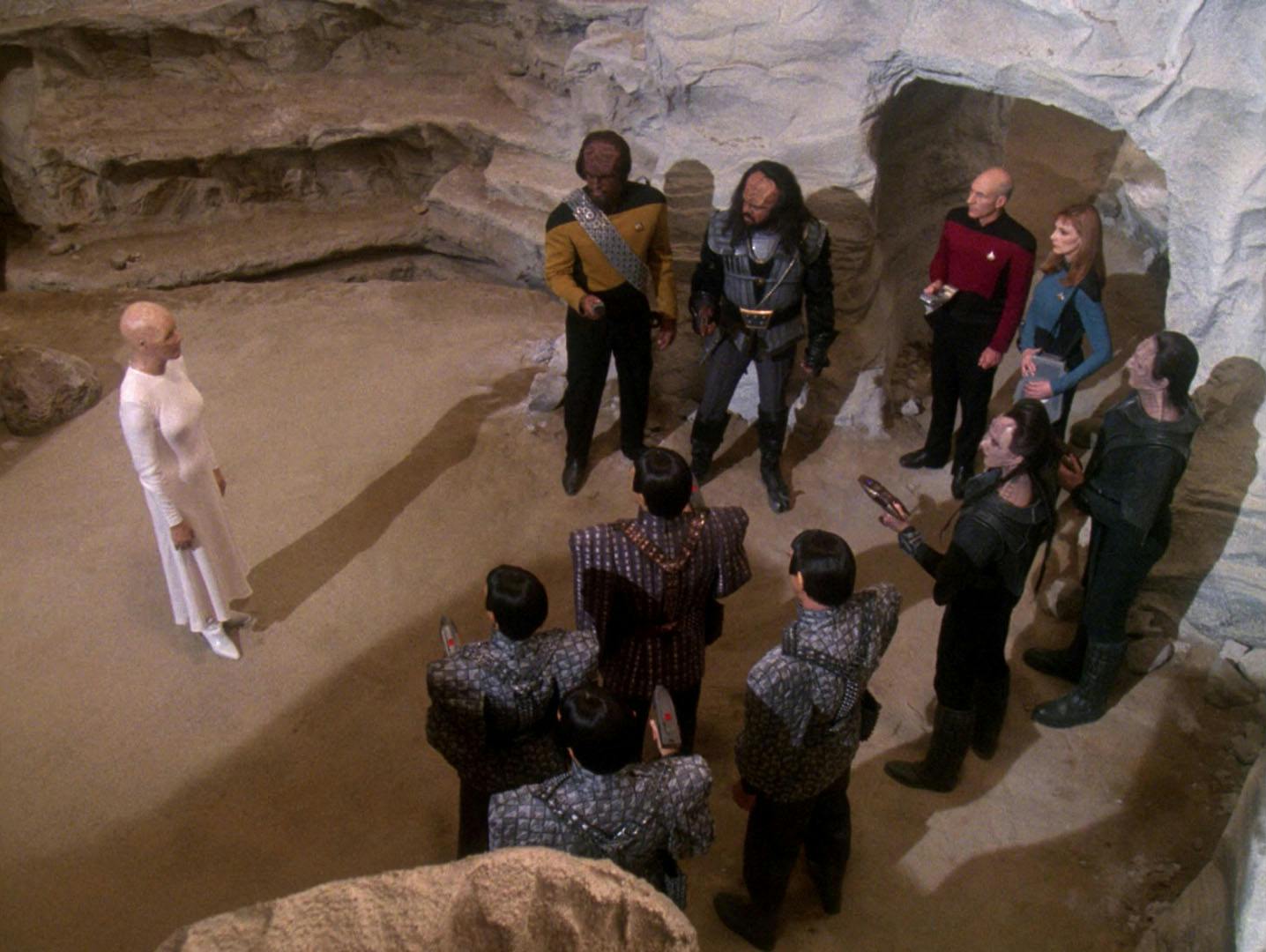
"The Chase"
Directed by Jonathan Frakes and written by Ronald D. Moore and Joe Menosky, " The Chase " was a sixth-season episode of The Next Generation , which, according to The Next Generation Companion , was considered in the writers' room the most "Roddenberryesque" episode of TNG at that time. The story itself took cues from Carl Sagan's novel Contact , and posited that yes, ancient aliens not only seeded most of the humanoid species, but also hid a message in the DNA of all those species.
Captain Picard's interest in archeology comes in handy during the quest to locate all the DNA strands and reveal the message, which was also represented metaphorically by the ancient artifact known as the Kurlan naiskos .
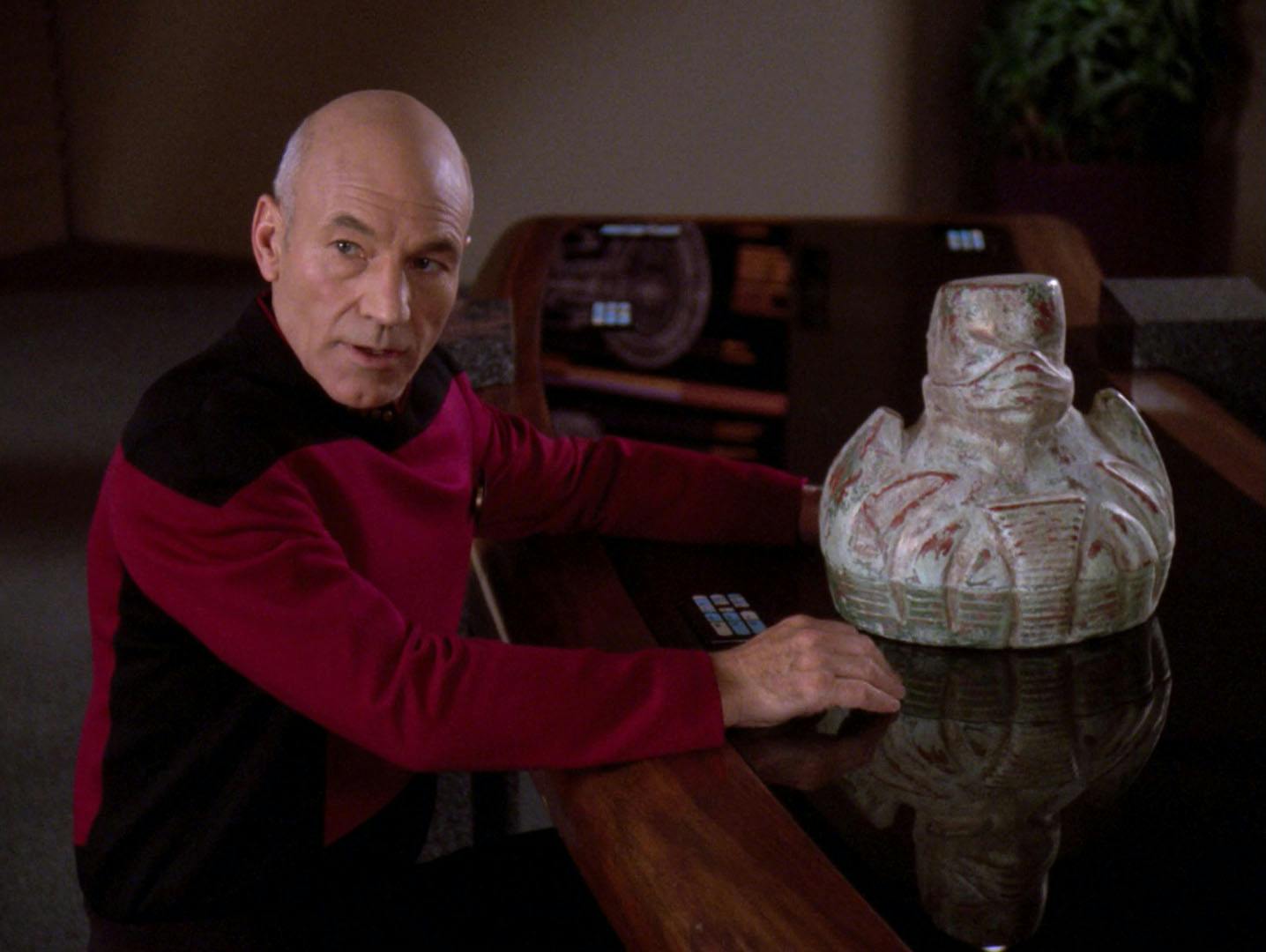
At the end of the episode, representatives from the Klingon Empire, the Romulan Empire, the Cardassian Union, and the Federation, all witness the truth — an ancient Progenitor (played by Salome Jens) makes it clear that all the humanoid species in the galaxy don’t exist out of pure hubris, but instead, out of a kind of desire for legacy. "You are a monument, not to our greatness, but to our existence…. Remember us."
Ronald D. Moore pointed out that there's no reason to believe that the Progenitors from "The Chase" and the Preservers from TOS aren't one in the same. Though not explicitly stated in the script, he said, "But this could be them, and be internally consistent."
Discovery Brings It All Home
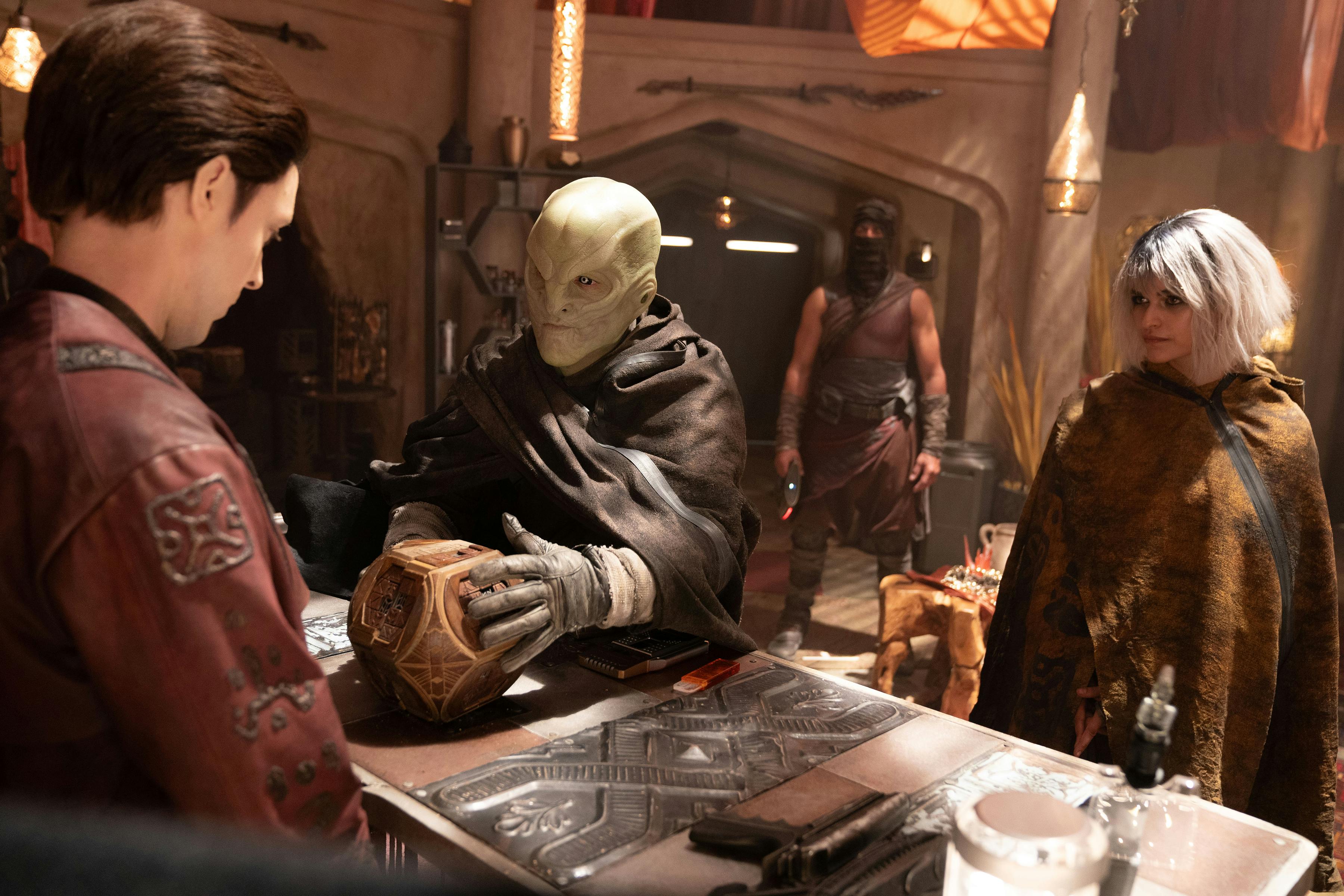
"Red Directive"
While The Next Generation established a canonical fact that TOS only danced around, that only answered the question of why . With Discovery Season 5, a stranger, and more complex question is getting broached — how ?
"The Chase" told us why there are so many humanoid species in the galaxy, but we had no idea how the Progenitors specifically pushed life to evolve on various planets toward the exact form of life we’re all so familiar with. As the crew of Discovery — and other forces — are in pursuit of this ancient tech, Star Trek is boldly speculating on one of the biggest questions of all time.
If there was a supreme intelligence behind the creation of life, what was their method? While these kinds of questions are somewhat mind-boggling in real life, what Discovery is doing now is what Star Trek has done all along: Ask provocative questions that are beyond what we know now, so that maybe, in the future, we’ll be better prepared.
We don’t know that the Progenitors exist in real science, but the "panspermia hypothesis," is a very real scientific concept. A friendly alien may not have consciously sparked life on Earth eons ago, but, in reality, it is possible that some building blocks for life itself may have come from the stars.
Get Updates By Email
Ryan Britt is the author of the nonfiction books Phasers on Stun! How the Making and Remaking of Star Trek Changed the World (2022), The Spice Must Flow: The Journey of Dune from Cult Novels to Visionary Sci-Fi Movies (2023), and the essay collection Luke Skywalker Can’t Read (2015). He is a longtime contributor to Star Trek.com and his writing regularly appears with Inverse, Den of Geek!, Esquire and elsewhere. He lives in Portland, Maine with his family.
Star Trek: Discovery Seasons 1-4 are streaming exclusively on Paramount+ in the U.S., the UK, Canada, Switzerland, South Korea, Latin America, Germany, France, Italy, Australia and Austria. Seasons 2 and 3 also are available on the Pluto TV “Star Trek” channel in Switzerland, Germany and Austria. The series streams on Super Drama in Japan, TVNZ in New Zealand, and SkyShowtime in Spain, Portugal, Poland, The Nordics, The Netherlands, and Central and Eastern Europe and also airs on Cosmote TV in Greece. The series is distributed by Paramount Global Content Distribution.
- Star Trek 101
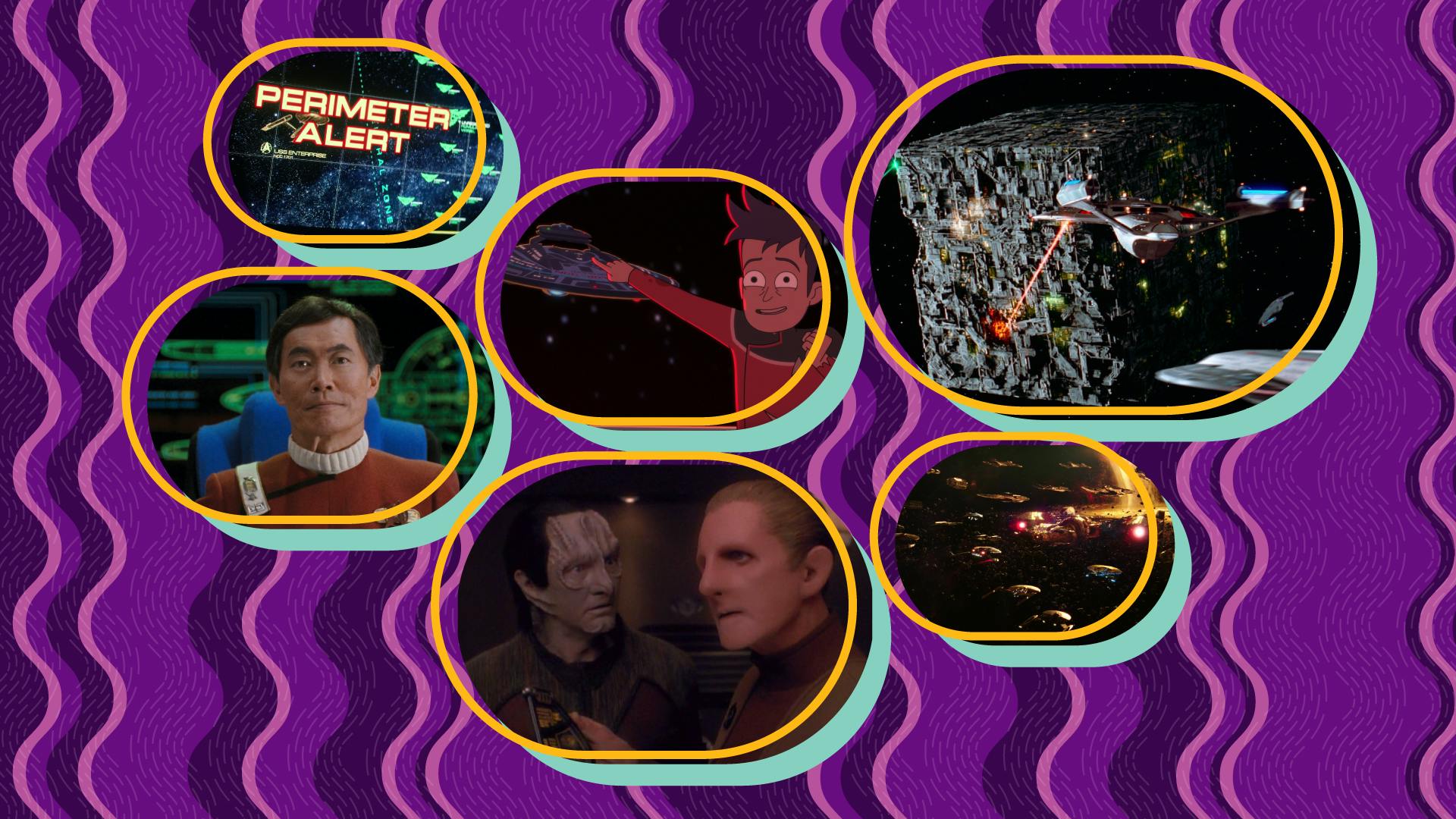
Screen Rant
Star trek online: unparalleled brings back tng’s denise crosby as captain sela.

Your changes have been saved
Email Is sent
Please verify your email address.
You’ve reached your account maximum for followed topics.
Star Trek Online: Both Worlds - Newest Game Update Unleashes The Borg King
One fallout character who appears in every game is a clear exclusion from the tv show, player discovers a time-saving bg3 trick after 700 hours of gameplay.
- Star Trek Online: Unparalleled brings back Denise Crosby as Captain Sela, continuing the Mirror Universe Borg storyline.
- Players must work with Captain Sela and Aetherian ally Captain Grendat-Bex to defend against the Borg threat.
- The new season features a gender/race change feature, event, and updates to the Infinity Lockbox in the upcoming launch.
Star Trek: The Next Generation 's Denise Crosby returns in Star Trek Online: Unparalleled ! Arc Games and Cryptic Studios announced today that Star Trek Online: Unparalleled , the 32nd season of their long-running free-to-play Star Trek MMORPG, will launch on May 28, 2024, for PC and on PlayStation and Xbox consoles on June 19, 2024. Star Trek Online: Unparalleled continues the Mirror Universe Borg and Aetherian story content from the prior season and features a new event, a gender/race change feature, and updates to the Infinity Lockbox.
Star Trek Online: Unparalleled brings back Star Trek: The Next Generation' s Denise Crosby to voice Captain Sela, who is a parallel universe's Captain of the Enterprise . Crosby played Lt. Tasha Yar in TNG and returned as Yar's part-Romulan daughter, Sela. To combat the Borg threat to the Multiverse, the player's Captain must work with Captain Sela and Aetherian ally Captain Grendat-Bex to defend the Iconians against this new Borg threat. Check out Star Trek Online: Unparalleled key art below:
Star Trek Online: Both Worlds introduces the Borg King in an epic new multiverse storyline continuing the incredibly successful MMORPG.
What Happened To Denise Crosby's Tasha Yar In Star Trek: The Next Generation
Denise crosby has made several returns to star trek.
Denise Crosby was one of Star Trek: The Next Generation 's series regulars when the series launched in 1987 but she didn't make it through season 1 as the USS Enterprise-D's Security Chief, Lt. Tasha Yar . TNG season 1 was beset by a multitude of turmoil behind the scenes, and Crosby was unhappy with Tasha's role on the show. Crosby asked to leave Star Trek: The Next Generation and Yar was killed off in the episode, "Skin of Evil". To Crosby's surprise, she was invited back to portray another doomed version of Tasha from a parallel universe in the classic Star Trek: The Next Generation season 3 episode "Yesterday's Enterprise".
Denise Crosby recapped episodes of Star Trek: The Next Generation season 1, as well as "Yesterday's Enterprise," on The 7th Rule podcast hosted by Star Trek: Deep Space Nine 's Cirroc Lofton and Ryan T. Husk.
Tasha Yar may have perished (twice) but Denise Crosby returned to Star Trek: The Next Generation as Sela, the half-Romulan daughter of the Yar from "Yesterday's Enterprise". TNG never definitively resolved what happened to Sela , and Yar did not reprise the role in Star Trek: Picard season 3, which reunited the cast of Star Trek: The Next Generation . Star Trek Online: Unparalleled gives Denise Crosby a new opportunity to play an alternate universe version of Sela who had the Starfleet career that eluded Tasha Yar on Star Trek: The Next Generation.
Source: Star Trek Online
To download and play Star Trek Online today for free, visit www.playstartrekonline.com .
Star Trek Online

- May 14, 2024 | Denise Crosby Returns As Captain Sela From Another Universe For ‘Star Trek Online: Unparalleled’
- May 14, 2024 | See Captain Sisko Meet A Familiar Face From ‘Picard’ In Preview Of ‘Star Trek’ #20
- May 13, 2024 | Preview ‘Star Trek: Discovery’ Episode 508 With New Images And Clip From “Labyrinths”
- May 11, 2024 | Interview: Elias Toufexis On Making Star Trek History Playing L’ak And Nerding Out In ‘Discovery’
- May 10, 2024 | ‘Star Trek: Discovery’ Debuts On Nielsen Streaming Top 10
THEORY: Did ‘Star Trek: Discovery’ Finally Resolve The “Calypso” Mystery?
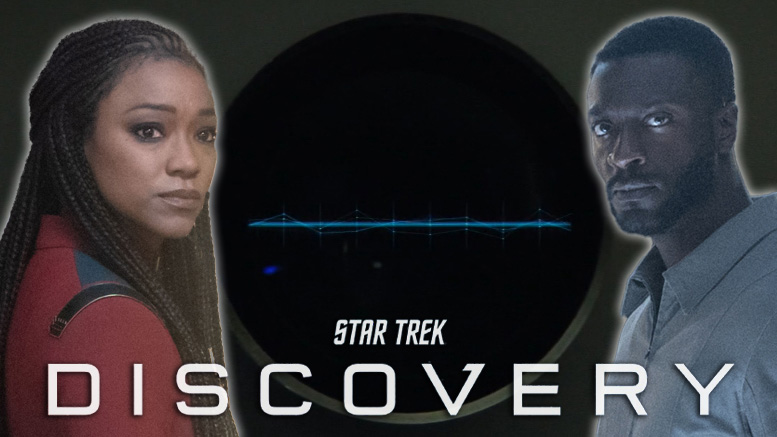
| April 23, 2024 | By: Iain Robertson 35 comments so far
“ Face the Strange ,” the fourth episode of Star Trek: Discovery’s final season, gave us a fun, old-fashioned Trek time travel adventure, but one scene in particular seems to tie into an intriguing and previously unexplained look into the far future.
Playing the long game with Short Treks
In “ Calypso ,” the second episode of Star Trek: Short Treks , we were presented with a vision of a future USS Discovery where the ship had been abandoned for almost 1,000 years. The ship’s sole inhabitant was Zora, a sentient AI with a penchant for watching musicals from Hollywood’s Golden Age to pass the time. While season 3 of Discovery partially delivered on the showrunner’s promise to provide a link to “Calypso” by showing how Zora emerged from the “ Sphere Data ,” just how the USS Discovery ended up abandoned in that far future has remained a lingering mystery.
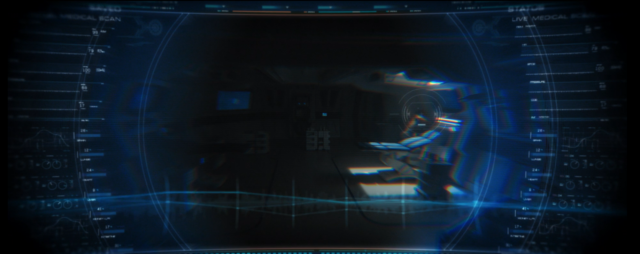
Zora’s POV in “Calypso”
“Face The Strange” didn’t see Burnham and Rayner jump anywhere near that far—just to the year 3218, 30 years or so into the characters’ futures. In this dark future, the Breen had obtained the Progenitors’ technology from Moll and L’ak and used it to launch a devastating attack on the Federation. Burnham and the rest of Discovery’s crew had been dead for decades, and Zora was again the ship’s lone occupant, with a penchant for the music of Doris Day.
Zora’s musical taste and familiar shots of her “Zora Vision” POV suggest an attempt to resolve the remaining mystery linking the Short Treks episode to Discovery . One big clue is that “Face the Strange” was written by Sean Cochran, who co-wrote “Calypso” with Picard co-creator Michael Chabon. So if we accept that the callbacks to “Calypso” were deliberate, what can they mean?
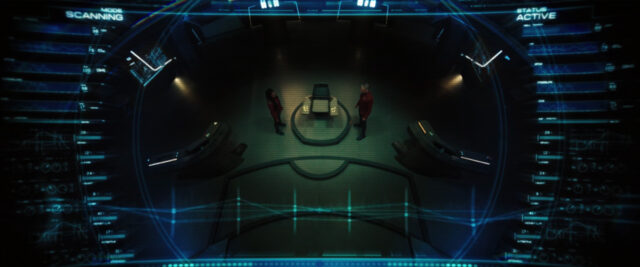
Zora’s POV in “Face the Strange”
Let’s take a look at three potential possibilities…
THEORY 1: “Calypso” is part of the same alternate future
The first and most obvious explanation is that “Calypso” is a continuation of the possible future shown in “Face the Strange.” The Discovery’s crew are killed by the Breen, who succeed in conquering the Federation. Zora is then left on the deserted ship for the next 1,000 years (which would place it around the 43rd Century), whiling away the centuries listening to Doris Day and watching musicals—in particular, the Fred Astaire/Audrey Hepburn classic Funny Face —until she encounters the character of Craft (Aldis Hodge).
Zora’s musical tastes, the abandoned ship, and the “Zora vision” scenes would definitely suggest “Calypso” as a continuation of this particular future. Since Burnham and the Discovery crew are fighting to find the Progenitors’ technology before Moll and L’ak (and likely to succeed), this would mean that future would cease to exist, and “Calypso” is an intriguing never-to-be alternate future, similar to the outcome of episodes like Voyager’s “Timeless” or Next Generation’s “All Good Things.”
There are however some inconsistencies between the two futures.
Firstly, the version of Discovery seen in “Calypso” is the 23rd-century version, prior to its 32nd-century refit. Most notably, the ship clearly has the original NCC-1031 designation, missing the ‘A’ that was added in the refit. Of course, the obvious, real-world reason is that “Calypso” was made between seasons 1 and 2 of Discovery , before the show’s jump to the future and redesign of the ship. This doesn’t make sense in-universe, but Short Treks has some other canon hiccups, so trying to explain away the missing “A” designation may be asking too much. The ship seen in “Face the Strange” is also in worse condition, but it’s likely Zora had Dots available that could repair the ship.
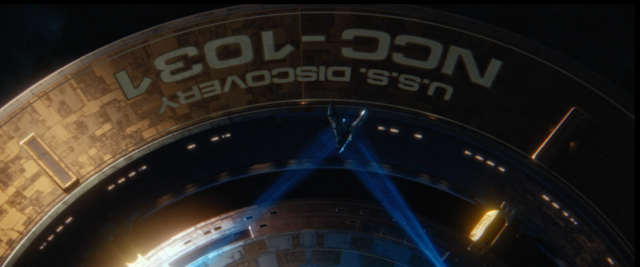
The Discovery in “Calypso” – No bloody A, B, C or D
Another inconsistency is that in “Calypso,” Zora tells Craft “the crew is away at present,” and says she has orders to maintain her current position, which doesn’t match with the events shown in “Face the Strange,” where she clearly stated that the crew had died. However, we don’t know what 1,000 years of isolation may have had on Zora. As a sentient life form, it’s possible by the time of “Calypso” she’s been experiencing some kind of AI senility or has repressed the traumatic memories of the crew’s demise. It’s also possible that she incurred some damage over the centuries, making her misremember the events.
In “Calypso,” Craft states he’s a soldier fighting the “V’draysh,” which is a bastardization of “Federation,” according to Michael Chabon. This doesn’t make sense if the Federation was defeated 1,000 years earlier; would the name still be in use? The name “V’draysh” was used once in the third season of Discovery, where it indeed related to the Federation.
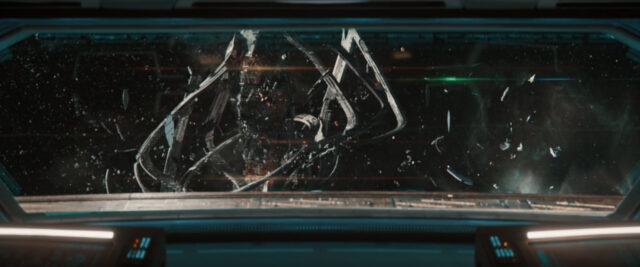
Federation HQ destroyed in “Face the Strange”
While it’s possible that “Calypso” is a continuation of the alternate timeline established in “Face the Strange,” there are enough inconsistencies that we should consider some alternative scenarios.
THEORY 2: “Calypso” is Zora’s dream
One new piece of information we find out about Zora in “Face the Strange” is that she dreams. Her first line to Burnham is “Captain, is that you? Or is this another dream?” Although we’ve no idea when this started, it seems the years of isolation coupled with Zora’s continued development have led to her having dreams. Obviously, this isn’t unprecedented in Trek. Data eventually evolved to the stage where he could dream, so it follows that Zora can too.
Could the events of “Calypso” be Zora dreaming of some company after years of isolation? It’s certainly a possibility, and dream logic is a good way of explaining away the inconsistencies, such as the USS Discovery’s appearance and the whereabouts of the crew. “Calypso” was an atypical, sometimes surreal Star Trek story, and having it be a dream does make a degree of sense, with Zora its unreliable narrator.
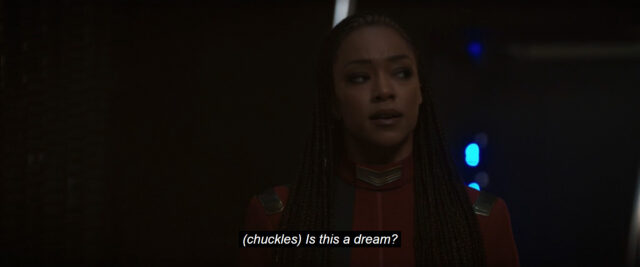
Zora wonders if she is dreaming in “Face the Strange”
There could also be a clue in the music Zora’s listening to in “Face the Strange.” “Que Sera Sera” is a song about a girl asking her mother about the future and what will happen to her. Is this a hint that the Zora we see past this point is her guessing about her future?
One major argument against the dream theory is that “Calypso” isn’t Zora’s story, it’s Craft’s. It starts with him and follows his time on Discovery and his odd love story with Zora. The story is told from his viewpoint. The only time this switches to Zora’s point of view is at the very end when Craft leaves Discovery and the camera remains behind, revealing Zora has named his shuttlecraft “Funny Face” and then returning to the bridge where Zora is again playing the movie. Although possible, the majority of dreams are in the first person. It would be unusual to dream a story from someone else’s viewpoint where you’re a secondary character. Then again, Zora isn’t human. Who knows what AIs dream of. Electric sheep maybe?
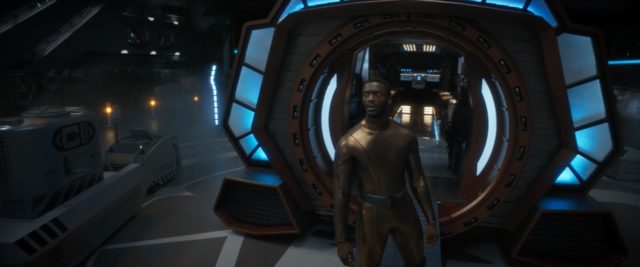
Craft says goodbye to Zora in “Calypso”
THEORY 3: “Calypso” is still in the future and episodes aren’t linked
It’s also possible that beyond the aforementioned links, the timelines from “Calypso” and “Face the Strange” are not directly linked. Zora’s musical tastes and use of her “Zora Vision” POV is something that will evolve regardless and so the future seen in “Calypso” is still to come. To completely tie it into the canon, some explanation could be made for why the ship had to be de-retrofitted before being abandoned for the best part of 1,000 years. The Discovery team didn’t know season 5 would be their last, so tying up the “Calypso” loose end and directly linking to Discovery’s final fate probably wasn’t a part of the plan.
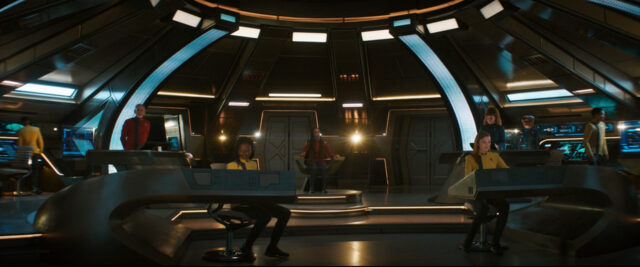
The Discovery crew faces their future at the end of “Face the Strange”
Whatever will be, will be
There is a nice poetry to the “dream” theory, so that is our preferred way to look at it. The most likely explanation is that we’re not supposed to know. “Calypso” is an intriguing (and, to be honest, beautifully told) look at the Discovery’s possible future. While it’s been hinted at in Discovery , the Short Treks episode probably works best as a fun “what if.” The sequence in “Face the Strange,” besides serving as a warning to Burnham and Rayner of the price of failure in their mission, also offered Sean Cochran and the show’s producers a fun tip of the hat to “Calypso” as well as offering an enigmatic hint as to its connection to Discovery .
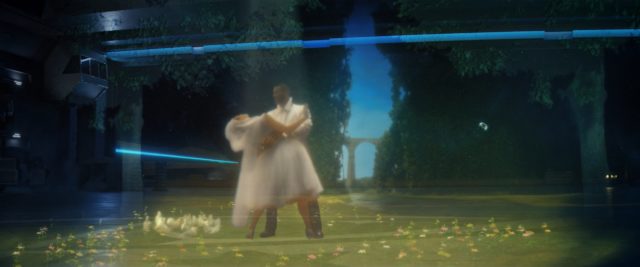
From Short Treks “Calypso”
But what do you have to say? Let us know in the comments below
Keep up with the latest about the Star Trek Universe at TrekMovie.com .
Related Articles

Preview ‘Star Trek: Discovery’ Episode 508 With New Images And Clip From “Labyrinths”
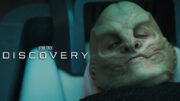
Discovery , Interview
Interview: Elias Toufexis On Making Star Trek History Playing L’ak And Nerding Out In ‘Discovery’
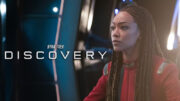
‘Star Trek: Discovery’ Debuts On Nielsen Streaming Top 10
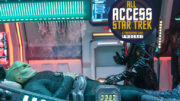
All Access Star Trek Podcast , Discovery , Interview , Review , Shatner , Star Trek 4
Podcast: All Access Breens Out On “Erigah” With Commentary From Elias Toufexis Of ‘Star Trek: Discovery’
definitely on the “Dream Team”, it’s the only one that makes sense
Is it just me or was there some exciting plan to jump forward where the Federation was so gone what was left had gone wrong and only the Discovery reunited with the crew could rekindle it, then they chickened out all “there is no way we can do a Trek show without mommy Starfleet Command there to help!!”
I definitely sense a tension along those lines. The beginning of s3 certainly seemed to point in that direction. They could’ve been Robin Hoods.
You’ve nailed the particular item about TREK that has frustrated me endlessly since the mid-80s. I never felt it had to be adventures set within Starfleet. After they went rogue in TSFS, I thought the crew should live out their golden years on the BoP/Bounty, and that the money production saved on matte shots and other earthcentric filler like spacedock could be put into showing some actual strange new worlds. Would also allow more time for the supporting cast and for a genuine ‘band of bros and sis’ feel among them. (and frankly, Starfleet didn’t deserve them after all the political paranoia evinced post-Genesis … suddenly this evolved future civilization is coming off contemporary, feeling more shadowy-Watergate than I could see as remotely credible.)
The key bit that informs my take on TREK comes from David Gerrold when he talked about how good drama revolves around ‘Kirk has a decision to make’ and not ‘Kirk is in danger.’ The original series buttressed that by often having the ship out on the rim where he couldn’t rely on timely responses from the hierarchy and had to make hard calls on his own. What better way to take that further than to have them on the Bounty, getting into situations and making ethical choices that DON’T have to cowtow to a distant and possibly unreliable bureaucracy?
I also though DS9 (which I really really like, far above any other followup to TOS), should have turned a corner with Sisko supporting the Maquis, not hunting them down like Starfleet’s pit bull. But again, that would have put them outside the auspices of ‘mommy Starfleet’ as you say.
I don’t know if I’d have stuck with DSC in s3 even if they had upheld this ANDROMEDA-style take on things, just because TPTB didn’t have the golden-platinum crutch of Anson Mount to keep the show going in spite of the bad writing. But I’d have probably at least considered watching it, just to see how they dealt with things.
I think that is the problem with Trek now… e instant communication and thousands of starships to back you up, and the adventures of your single starship on the frontier just don’t seem to matter as much. In TOS, Kirk makes the wrong decision and it’s intergalactic war and millions of lives on the line. In TNG the best episodes is where Picard is compromised by the Borg and they get to take over or destroy the starfleet. DS9 rectifies this by letting Sisko basically command the entire fleet (though it sure looks silly when space combat is lines of thousands of ships just running into thousands of other ships). I feel someone in Discovery was trying to fix the problem of being “out there” again (probably whoever put color into the big E bridge) and then got overruled (along with boring down of the big E bridge). Calypso basically hinted they would be left out there alone in some primitive starship. The fate of the entire Federation depending on their ability to rebuild alliances, rebuild ideals. You could explain the lack of far off magical tech by the fall. Instead they chickened out, I don’t know why, but it’s condemned Discovery to rather the rather bland where they literally have to have the Federation fall apart AGAIN to fix it. Anyone play Star Control 2? They need to make that into a TV show lol
kmart — I LOVE what you wrote here regarding the events post ST3:TSFS and really everything you said here. VERY insightful!
Thanks. As you come across my postings here, you’ll see I’m very big on exploring ‘treks not taken,’ including what they could have done with an Enterprise-B limited series.
Michael Chabon was the worst choice to write any Star Trek story. “Calypso” don’t fit in any possible way to canon.
Calypso was a great episode of Trek, and fairly beloved based on reviews at the time. Sorry it wasn’t for you!
“Calypso” is one of Star Trek’s best episodes, and it was written before later seasons of Discovery made it not fit canon.
Yeah, he’s terrible lol look at Picard Season 1? Embarrassingly bad.
He wrote the two best episodes of SHORT TREKS, “Calypso” and “Q&A.” He also did a great job with PICARD season one.
The first season of Picard was fantastic up until the two-part finale when it was (somehow) simultaneously drawn out and rushed. It felt like the original plan was for Picard to fully and truly die, but then either Stewart decided he wanted to continue with playing Picard, or TPTB intervened, but that was by far the biggest misstep in season 1.
Unfortunately, while season 1 was lauded by critics, it was mostly derided by fans. As such, subsequent seasons largely ignored some of the more intriguing idea introduced in season 1 – exploring the state of the Romulans post supernova (is the empire completely gone, are they trying to rebuild, etc.); exploring a bit more of the Zhat Vash (i.e. did it survive after the events of the finale) – but not too much more; what’s the general state of the Federation as it appears to have entered a bit of an isolationist state; and what’s up with the scary AI things as seen in the premonition and briefly in the season finale.
Alas, I highly doubt any of those ideas will be explored at this point.
Why does it need to fit into canon? It’s 1,000 years in the future.
Canon is overrated. Calypso was a lovely story and exactly what Trek should be doing.
I have very little confidence they’ll resolve this storyline between short treks & season 5. They would have explicitly made it apparent they were connecting to that short trek in that episode & not be so nuanced.
I’m imagining the extra shooting they did to make it a “fitting series finale” is along the lines of Poochie from the Simpsons…I have to go now, my planet needs me. [poochie died in space during his trip home].
I hope they never clearly explain it and leave a sense of mystery. “Calypso” was so lovely, partially because it wasn’t concerned with overly pat canon connections.
To this day I always wondered how this story came around? It seems weird it would be a coincidence Chabon set this story so far in the future a season before it happened on the show itself. But then you have to wonder if he was told directly the plan then what were the parameters? How far could he go with it? Did they always know it was something they would have to deal with and had a plan or was it all after the fact?
I would love if someone just talked about the short and how it came about? Maybe we get it after the show ends.
My guess is that Chabon et al. wanted to create a wild future possible story line for Discovery that was outside any continuity restraints or existing plans they had. Maybe Calypso served as a pilot for where Discovery eventually went with its future jump, even if the details were ultimately quite different.
As you note, maybe Chabon will someday do a commentary track on the story and reveal its origin. He was quite communicative about his work on Trek while he was doing it.
There’s also still the open question, who upgraded the probe that Pike and Tyler fought with
Wasn’t it just Control in the future?
I’m squarely in the camp that I just don’t care to see it explained in any way. Whatever plan Chabon had to tie in this flash forward was dropped a long time ago, and it will be nothing more than a shoehorn explanation, at best.. with no story payoff. Just let it be, and make up your own head canon if you want to.
Yep. I still wish Enterprise hadn’t felt it necessary to explain the Klingon foreheads.
I generally find a lot of these genre “and that’s why x has y” explanations pretty thin. I don’t need to see how Indiana Jones got his scar, how Nick Fury lost an eye or how McCoy got his nickname.
There’s something to be said about leaving some things to the imagination.
Small point to respond to but just gotta say – I actually kind of like the Enterprise explanation for the ridges. I just don’t think they needed to bend over backwards to explain it away. A simple dialogue exchange in a random episode would have been enough.
I loved Calypso and I am VERY OK with it having been Zora’s dream, or in-universe really happening in that alternate future with a few inconsistencies. I have a feeling (no idea) that this is all we will get regarding Calypso and I’m OK with that — not everything needs to be explained.
Calypso was one of the most beautiful, artful pieces of Trek ever made. I almost wish it had been expanded into some kind of standalone feature-length piece.
Agreed, it was beautiful!
Based on what happened in Season 2, Calypso was seemed to be a red herring for the crew abandoning the Discovery with the Sphere data, which allowed it to gain sentience. It was a possible future that was averted when they took the Discovery into the far future.
It was a lovely episode, but it really didn’t fit into continuity, both before and now.
For me, it makes more sense that “Calypso” be in the same time-line as season 2 if the Red Angel had not changed time by jumping into the 32nd century. No jump, no refit.
I was wondering what they’d do, as two of the other three first season Short Treks did, indeed, tie in.
But I always saw the thousand year reference, together with “V’draysh” being used in Season Three, as pointing to an abandoned option for Season Three- they jump forward, the crew temporarily abandons the ship, the Federation has gone bad (or is seen as having done so), Calypso happens, the crew returns, and we pick up from there.
There is a possibility that Zora de-evolved the ship during repairs as she became more senile after 100s of years of isolation and being alone. We’ve seen the DOTS repair and repaint many times. Maybe, with Zora’s confused directions, they repaired the ship to its earlier version. You’ve gotta love Star Trek! There are always possibilities.
Yeah the DOTs and programable matter means Zora could have refit Disco back to the earlier form as she got sentimental in her old age and Isolation. I just view it as, yes, it was an extension of the “bad future” seen in this episode.
I remember enjoying this short when it came out. It would probably be cool to leave it as-is, not explain anything at all. A mystery piece.
I agree, Calypso was an intriguing and beautifully told story.
If it’s all Zora’s dream—and the writers don’t bother to clue us in to that, a la Data getting a whole episode where it is made very clear that he is experimenting with dreaming—that’s super lazy writing . I’ll come back to this.
I could be fine with ‘What if?’ Trek stories that show us events in an unexplained, divergent timeline. I will point to Marvel’s animated What If? show as proof of the viability of this storytelling approach for a modern, expansive, TV & film franchise.
I have just one, big problem: the entirety of Star Trek as a franchise, to date.
Let me explain. No, there is too much. Let me sum up.
Star Trek TV and movies haven’t historically done pure ‘What If?’ storytelling. In fact, Trek writers across the decades have worked hard to preserve the coherence of the ‘Prime’ timeline and any offshoots or variations we see.
Starting with Mirror, Mirror and all the way through Discovery’s adventures in the mirror universe, Trek TV writers have bent over backwards to help us understand what we were seeing, whenever we saw a divergent timeline.
For all the many time travel stories (and all of Janeway’s headaches caused by temporal paradoxes), the writers have always tried to connect the dots for us.
Even the Kelvin-verse movies spent precious screen time showing how that alternate timeline diverged from Trek ‘Prime.’ We got a passing-of-the-torch scene with two Spocks (Nimoy and Quinto) and so forth, to really make sure we understood.
This is important because as the audience, we want to enjoy time with these characters we love. When an incoherent storyline distracts us from going on the adventure with these beloved characters, we get frustrated. The plot can be twisty and momentarily confusing, but it ultimately exists to provide opportunities for Kirk, Sisko, Burnham, et al to face challenges, be heroic, and grow—not make us go, “well I’ve seen the whole show, and it just doesn’t make any sense.”
The so-called ‘beta canon’ of books, comics, fan-made productions, etc. is another animal, of course. There, anything goes. And it has to be this way because after so many hundreds of TV episodes and so many movies, it gets really hard for writers to keep it all connected. I think a fair argument could be made that there is now way too much canon to keep tying everything together perfectly and tell exciting, new stories with familiar characters. That’s fine for books and comics and whatnot. There you have the freedom to take our familiar characters and play with them in a new sandbox if you want to.
But the TV and movie writers have always given us exposition—and a fair amount of technobabble—at least attempting to preserve a unified chronology of the Star Trek universe. They didn’t alway succeed 100%, but we’ve never seen them just throw in the towel on trying to make it all make sense.
If Calypso ends up being an unexplained ‘What if?’ it would be a first for ‘alpha canon’ Trek, I think.
I don’t hate the idea of Star Trek doing this, but could the writers / producers maybe give us a heads-up that they’re going this way? Or do it with some consistency instead of a one-off Short Trek that leaves fans wondering and theorizing?
Back to Marvel’s What If? series—there at least you have The Watcher giving you some intro voiceover explaining what’s going on. You see Timmy, audiences like mystery and surprise, but also really appreciate it when you make things understandable .
My conclusion: in the context of Star Trek, this is just lazy writing and/or a willful disregard for the unwritten rules of logical storytelling that Trek has established with its fan base for decades. It seems especially lazy or careless since Face The Strange bothers to hint at some answers, but doesn’t actually give us any that make sense.
Granted, we still have a few Disco episodes to go. They might surprise us by revisiting this whole debacle and clearing things up, Trek-style. They’d have to jump through some hoops to reconcile the discrepancies, but we’ve seen plenty of crazy stories. It’s sci-fi, anything can happen. It was a chroniton explosion. Q’s son did it. Whatever.
Somehow, I doubt these writers care . Discovery has always been a show that prioritized ham-fisted emotionalism over logical storytelling. I think that will be its legacy. Prove me wrong, Discovery writers! Time is running out, and as far as I know there’s no alternative timeline in which you will get a season six to be entertaining and coherent.

Gates McFadden didn't think Star Trek: The Next Generation would last long
B efore Star Trek: The Next Generation premiered, there were plenty of doubts about how long the series would last. The fans who declared they would not watch any other captain or crew on the bridge of the Enterprise besides Captain Kirk and his team probably had a lot to do with that assumption. And when the first season began, things were a little rocky, and it looked like all signs were pointing toward a quick cancellation.
While there were a few episodes that stood out like The Big Goodbye and Heart of Glory , there were many more that are considered cringeworthy even to this day. In fact, one of them, Code of Honor , has been denounced by Jonathan Frakes and others with the suggestion that it should be pulled from viewing. Others like Angel One and Skin of Evil are, for the most post, skippable even though the latter is the one where Lt. Tasha Yar (Denise Crosby) dies. So it's fair to say that it's no wonder there were questions as to whether The Next Generation would be renewed for a second season.
Even Gates McFadden , who portrayed Dr. Beverly Crusher in season one and again in seasons three-seven, admitted in an interview for Star Trek All Good Things: A Next Generation Companion, that if she'd been asked years ago if the show would go for a year, she would have said it probably wouldn't. In fact, she said she thought "The Next Generation would be a short-term job."
The Next Generation picked up steam in season two, though, even if it was without McFadden, with som strong episodes like The Measure of a Man , Pen Pals , Q Who , and The Emissary really upping the strength of the season and making another season renewal easier. Fortunately for all of us fans, those who thought The Next Generation would make it beyond the first season were wrong, and the characters from the series are still going strong thirty-seven years later.
This article was originally published on redshirtsalwaysdie.com as Gates McFadden didn't think Star Trek: The Next Generation would last long .

93-Year-Old William Shatner ‘Might Consider’ Returning as Captain Kirk in New ‘Star Trek’ Project Through De-Aging: ‘It Takes Years Off of Your Face’
By Zack Sharf
Digital News Director
- ‘Megalopolis’ Producer Addresses Report of Francis Ford Coppola Trying to Kiss Extras on Set: ‘I Was Never Aware of Any Complaints of Harassment’ 3 hours ago
- ‘All That’ Star Lori Beth Denberg Alleges Dan Schneider Showed Her Porn and Initiated Phone Sex; Schneider Calls Claims ‘Wildly Exaggerated’ 7 hours ago
- Anya Taylor-Joy Has About 30 Lines of ‘Furiosa’ Dialogue, Spent ‘Months’ Without Speaking on Set and Fought to Scream on Camera: ‘I’ve Never Been More Alone Than Making That Movie’ 1 day ago

William Shatner recently told Canadian Press that he wouldn’t rule out returning as Captain Kirk in a new “ Star Trek ” project if the script impressed him. While the actor’s age might pose an issue as Shatner turned 93 years old in March, that’s nothing a bit of de-aging technology couldn’t fix.
“It’s an intriguing idea,” Shatner said about returning as Kirk. “It’s almost impossible. But if was a great role and so well-written and if there were a reason to be there not just to make a cameo appearance, but if there were a genuine reason for the character appearing, I might consider it.”
Popular on Variety
“[It] takes years off of your face, so that in a film you can look 10, 20, 30, 50 years younger than you are,” Shatner said.
Another issue around Shatner’s “Star Trek” return is Kirk’s death in the 1994 film “Star Trek Generations,” which is the last time Shatner appeared in the iconic franchise. He’s already brainstormed a plot device that could serve as a workaround and have his version of Kirk come back to life.
“A company that wants to freeze my body and my brain for the future might be a way of going about it,” Shatner said. “‘We’ve got Captain Kirk’s brain frozen here.’ There’s a scenario. ‘Let’s see if we can bring back a little bit of this, a little salt, a little pepper. Oh, look at that. Here comes Captain Kirk!’”
Variety exclusively reported in March that Steve Yockey, creator of the Max series “The Flight Attendant,” had signed on to write the script for “Star Trek 4.” The movie is being designed as the final installment for Pine and the cast. Several attempts to get a fourth “Star Trek” movie off the ground with this cast have failed over the years. One version of the project was to be directed by Matt Shakman (“WandaVision”) and written by Lindsey Beer (“Sierra Burgess Is a Loser”) and Geneva Robertson-Dworet (“Captain Marvel”). Shakman left the project to direct Marvel’s “The Fantastic Four” instead.
Other “Star Trek” projects remain in development at Paramount as well. The studio is working with screenwriter Seth Grahame-Smith (“Abraham Lincoln: Vampire Hunter”) and director by Toby Haynes (“Black Mirror: USS Callister”) on an origin story movie, while a project with screenwriter Kalinda Vazquez (“Fear the Walking Dead”) that was first announced in 2021 also remains in development.
More From Our Brands
‘jeopardy’ to debut a pop culture spinoff, ferrari’s signature naturally aspirated v-12 engine isn’t going anywhere—for now, ted leonsis plans ‘credible and strong’ new offer for nationals, the best loofahs and body scrubbers, according to dermatologists, tvline items: welcome to wrexham renewed, ghosts star joins sex lives and more, verify it's you, please log in.
JavaScript Required
◄ imdb polls, poll: sheldon cooper’s “star trek” guests, make your choice.

Wendie Malick

Christopher Lloyd

Lauren Lapkus

Pamela Adlon

Keith Carradine

Lea Thompson

Jennifer Hale

William Shatner

Wallace Shawn

David Foley

Wil Wheaton

Jerry O'Connell

Stephen Root

Jason Alexander

Richard Kind

Jack McBrayer

Ed Begley Jr.

Leonard Nimoy

LeVar Burton

Brent Spiner

George Takei

Robert Picardo

Wallace Langham

Brian Posehn

Mark Harelik

Phil Morris

Brian George

Harry Groener

John Rubinstein

Dakin Matthews

Pasha D. Lychnikoff

Dennis Cockrum

Stephen Hawking

Recent Activity

Recently Viewed

IMAGES
COMMENTS
In Theory: Directed by Patrick Stewart. With Patrick Stewart, Jonathan Frakes, LeVar Burton, Michael Dorn. When a female crew member is infatuated with Lieutenant Commander Data, he decides to give a romantic relationship a try. Also, the Enterprise finds itself having to maneuver through a dangerous nebula.
In Theory. " In Theory " is the 25th episode of the fourth season of the American science fiction television series Star Trek: The Next Generation, originally aired on June 3, 1991, in broadcast syndication. The episode was written by Joe Menosky and Ronald D. Moore and was the directorial debut of cast member Patrick Stewart .
In his latest attempt to understand Humanity, Data accepts the affections of Jenna D'Sora and pursues a romantic relationship with her. In the meantime, a nebula the Enterprise is passing through is causing strange things to happen on the ship. "Captain's Log, Stardate 44932.3. The Enterprise is preparing to enter the Mar Oscura, an unexplored dark matter nebula. Commander Data is modifying ...
In Theory (1991) Full Cast & Crew. See agents for this cast & crew on IMDbPro Directed by . Patrick Stewart Writing Credits Gene Roddenberry ... STAR TREK: THE NEXT GENERATION SEASON 4 RATINGS a list of 26 titles created 19 Feb 2020 Jornada nas Estrelas: A Nova Geração 4ª Temporada ...
In-depth critical reviews of Star Trek and some other sci-fi series. Includes all episodes of Star Trek: The Original Series, The Animated Series, The Next Generation, Deep Space Nine, Voyager, Enterprise, Discovery, Picard, Lower Decks, Prodigy, and Strange New Worlds. Also, Star Wars, the new Battlestar Galactica, and The Orville.
4.25 In Theory. As the Enterprise prepares to explore a strange dark matter nebula, Data and well-known Enterprise crew member Lieutenant (Junior Grade) D'Sora, with whom he has a long-standing ...
Watch Star Trek: The Next Generation — Season 4, Episode 25 with a subscription on Paramount+, or buy it on Fandango at Home, Prime Video. While the Enterprise explores a nebula with unusual ...
While the Enterprise explores a nebula with unusual properties, Data becomes involved in a romantic liaison with a crew member.
In Theory. While the Enterprise explores a nebula with unusual properties, Data becomes involved in a romantic liaison with a crew member. Starring: Patrick Stewart, Jonathan Frakes, LeVar Burton, Michael Dorn, Gates McFadden. Stream 70+ live channels and 70,000+ titles on-demand—just $25/month.
Data experiments with love by pursuing a romantic relationship with a fellow crew member.
Star Trek TV series. Star Trek: The Next Generation ( TNG) is an American science fiction television series created by Gene Roddenberry. It originally aired from September 28, 1987, to May 23, 1994, in syndication, spanning 178 episodes over seven seasons. The third series in the Star Trek franchise, it was inspired by Star Trek: The Original ...
Episode Guide for Star Trek: The Next Generation 4x25: In Theory. Episode summary, trailer and screencaps; guest stars and main cast list; and more.
Mallena reviews "In Theory," an episode of 'Star Trek The Next Generation.' Star Trek The Next Generation: In Theory. by Mallena "Honey, I'm home!" Data explores the concept of romance with a fellow crew person, and the Enterprise travels through an unusual nebula in this strange but amusing tale. ...
The Next Generation Transcripts - In Theory. In Theory Stardate: 44932.3 Original Airdate: 3 Jun, 1991. Captain's log, stardate 44932.3 The Enterprise is preparing to enter the Mar Oscura, an unexplored dark matter nebula. Commander Data is modifying several new photon torpedoes for an experiment designed to elicit more information about this ...
Original air date: June 3, 1991. The Enterprise is about to enter a "dark nebula," so Data is working with security officer Jenna D'Sora to modify a photon torpedo into a probe to study the nebula. Jenna has just broken up with her boyfriend, and Data lends an ear to her troubles. Jenna finds Data's attentiveness to her drama as sweet.
In Theory Star Trek: The Next Generation. Jump to. Edit. Summaries. When a female crew member is infatuated with Lieutenant Commander Data, he decides to give a romantic relationship a try. Also, the Enterprise finds itself having to maneuver through a dangerous nebula. When the Enterprise enters the uncharted Mar Oscura dark matter nebula ...
"Theory" isn't really an exception, as TNG has never been a show that does relationships very well. What makes this work better than, say, the overheated goofiness of "The Host," is that we really ...
Original Air Date: June 1, 1991 Starring: Brent Spiner, Patrick Stewart, LeVar Burton Directed by: Patrick Stewart Synopsis: As the Enterprise crew run tests on a dark matter nebula, a female crew member assigned to work with Lt. Data (Brent Spiner) on the scientific side of the tests shows romantic interest in him, leaving Data to question matters in love.
Star Trek: The Next Generation S4E25 "In Theory". Captain Obvious Aesop: Don't fall in love with someone who can't love you back. How did anyone in the crew actually think that this was a good idea? Idiot Ball: Data's Literal-Minded qualities get taken up to eleven in this episode, which depicts him misunderstanding simple sayings like "Don't ...
Directed by Jonathan Frakes and written by Ronald D. Moore and Joe Menosky, "The Chase" was a sixth-season episode of The Next Generation, which, according to The Next Generation Companion, was considered in the writers' room the most "Roddenberryesque" episode of TNG at that time. The story itself took cues from Carl Sagan's novel Contact, and ...
"Star Trek: The Next Generation" In Theory (TV Episode 1991) cast and crew credits, including actors, actresses, directors, writers and more. Menu. ... Star Trek: The Next Generation (Season 4) a list of 26 titles created 13 Aug 2015 Star Trek TNG: Best episodes ever a list of 28 titles ...
Denise Crosby was one of Star Trek: The Next Generation's series regulars when the series launched in 1987 but she didn't make it through season 1 as the USS Enterprise-D's Security Chief, Lt. Tasha Yar. TNG season 1 was beset by a multitude of turmoil behind the scenes, and Crosby was unhappy with Tasha's role on the show.Crosby asked to leave Star Trek: The Next Generation and Yar was killed ...
THEORY 1: "Calypso" is part of the same alternate future. The first and most obvious explanation is that "Calypso" is a continuation of the possible future shown in "Face the Strange ...
In Theory (1991) Michele Scarabelli: Lt. Jenna D'Sora. Showing all 19 items Jump to: Photos (3) Quotes (16) Photos ... STAR TREK THE NEXT GENERATION SEASON 4 (1990) (8.0/10) a list of 26 titles created 11 Aug 2012 Star Trek: The Next Generation - Data a list of 49 titles ...
The Next Generation picked up steam in season two, though, even if it was without McFadden, with som strong episodes like The Measure of a Man, Pen Pals, Q Who, and The Emissary really upping the ...
William Shatner recently told Canadian Press that he wouldn't rule out returning as Captain Kirk in a new "Star Trek" project if the script impressed him. While the actor's age might pose ...
Star Trek: The Next Generation: Created by Gene Roddenberry. With Patrick Stewart, Jonathan Frakes, LeVar Burton, Marina Sirtis. Set almost 100 years after Captain Kirk's 5-year mission, a new generation of Starfleet officers sets off in the U.S.S. Enterprise-D on its own mission to go where no one has gone before.
The last two episodes of Young Sheldon (2017) will be shown on May 16, 2024. During "Young Sheldon" and The Big Bang Theory (2007), Sheldon Cooper demonstrated that he is an avid Star Trek (1966) Fan. Both "Young Sheldon" and "The Big Bang Theory" have had cameos, other appearances and collaboration from "Star Trek" actors and crew members.